Bosuilstadion
From Hell of Deurne to a sanitized theater. From the prestigious stadium, which hosted the replay of the 1964 Cup Winners' Cup final,
the Euro 72 and innumerable Low Countries' derbies, there is only one stand.
But for how long ? Indeed, the old stadium of Deurne is more and more threatened.

The oldest Belgian club without a fixed address
 Founded in 1880, the Royal Antwerp Football Club will take more than forty years to find a final home.
Founded in 1880, the Royal Antwerp Football Club will take more than forty years to find a final home.
Moving five times, the Reds and Whites have successively played on the following grounds : Wilrycksche Plein in the district
of Kiel (1880-1893),
Transvaalstraat in Berchem (for two years), on a field near the velodrome Zurenborg in Berchem (still during two years), in
this same velodrome (1897-1903), Kruisstraat in Kiel (1903-1908) and finally in the stadium of Broodstraat, still in Kiel (1908-1923).
It is amusing to note that three times the Sinjoren have played in the neighborhood of their historical rival, the Beerschot.
Although Antwerp FC played no significant role before the war, the number 1 was supported by a growing crowd. It was high time
for the club to anchor in a large stadium to retain the public who will not let go of the club anymore.
It was done in 1923 when the management buys a plot of 30 hectares in the town of Deurne. This purchase, at a price defying all
competition, has been at the origin of a discord that will become an endemic problem to Antwerp. While only 8 hectares were needed
for the construction of the stadium, several administrators felt that it was better to buy a larger piece of land to encourage the
emergence of a commercial activity around the club, something that was strictly forbidden at the time by the Belgian Federation !
The amateurish trend against professionalism has continued until the explosion that has leaded Antwerp into lethargy for a few years.
At the same time, a new amateur club was founded (referred to simply as "the Antwerp") and took the place of the RAFC in the stands
of Bosuil. Fortunately, the various eventually fade and the club could calmly celebrate his first title of Belgian Champion in 1929.
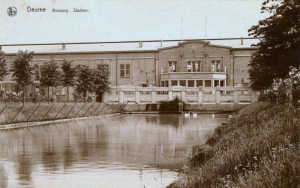
60,000 places
The Bosuil was inaugurated on 1 November 1923 during a friendly match between Belgium and England (2-2). The designers
of the time have not forgotten the aesthetics of the stadium : the tribune 1 has small accents of Art Deco and an elegant
Greek colonnade dominates the tribune 2. This last has disappeared in 1930 and will be replaced by a roof covering this big stand.
Of the 38,000 places of origin, the stadium was quickly adapted in 1936 to accommodate up to 50,700 people. This expansion is
justified by the holding of the annual derby of the Low Countries. Each year, Belgium receives its Dutch neighbor for matches
that have rarely been peaceful. It was at this time that the stadium earned its nickname "Hell of Deurne".
 The stadium consists of a main sitting stand and a series of tiers surrounding the pitch on three sides. Tribune 1 can
seat 7,000 people in seating, tribune 2 13,000 and the two ends hold about 32,000 standing places.
The stadium consists of a main sitting stand and a series of tiers surrounding the pitch on three sides. Tribune 1 can
seat 7,000 people in seating, tribune 2 13,000 and the two ends hold about 32,000 standing places.
At that time, only the Heysel Stadium has an
equivalent capacity in Belgium.
In 1956, the capacity will increase again with the construction of the third floor of the end stands. The maximum capacity
is then reached : 60,000 places.
In the meantime, three new national titles have awarded to the Great Old Club (1931, 1944, 1957).
The latter title allows Antwerp to take its first steps in the new continental competition created by UEFA : the Champions Clubs' Cup.
By way of introduction, the Antwerp has been more than spoiled as they face neither more nor less than the great Real Madrid. This
first match has been the record attendance for Antwerp : 55,000 people. If the resistance of the Antwerp allows to be beaten only
on the wire (1-2), the return match in Chamartin has been a real punishment : 6-0.
Subsequently, other big names will come to rub shoulders with the infernal atmosphere of Deurne in the context of European competitions,
with various fortunes for the Antwerp.
The good quality of the facilities and the reputation of the atmosphere have leaded the UEFA to designate the Bosuil as part of
the replay of the final of the Cup Winner's Cup 1964. If the first round (played at the Heysel) between Sporting Lisbon (Portugal) and the MTK Budapest (Hungary) ended with a 3-3,
the second has seen the Lisbonists triumph by 1-0. Unfortunately, this final has been followed by only 18,000 spectators.
 In 1972, the final phase of the European Football Championship (now known as the Euro) has been organized in Belgium.
In 1972, the final phase of the European Football Championship (now known as the Euro) has been organized in Belgium.
In the company of the Bosuil, the Heysel, the
Astridpark (both in Brussels) and
Sclessin (Liège) will host the seven matches of
the competition.
The semifinal between Belgium and West Germany has set the record attendance for the stadium : 56,000 spectators. But this match has
also been synonymous with elimination for the Red Devils (1-2). The Belgians have nevertheless obtained a third honorific place
after a 2-1 win against Hungary in Sclessin.
As for the final, it has opposed the Federal Republic of Germany to the USSR at the Heysel (3-0 for the Germans).
Concerning the Antwerp, Deurne has become famous as the place of "Miracle of Vitosha".
During the 1989-1990 season, Antwerp reached the quarter-finals of the UEFA Cup. After a 0-0 against Vitosha Sofia in Bulgaria,
the Reds and Whites had taken an option on qualifying for the next round. Alas, the game at Bosuil quickly turned to confusion
and the Antwerp will be led 1-3 three minutes from the end of the match.
Adding to the demobilization of Belgian players, the Antwerp was reduced to 10 after the injury of Captain Francky Dekenne (the
three changes had already occurred). Miraculously, the referee added 6 minutes into the game and the unthinkable happened : Nico
Claesen brought the score down to 2-3, then the madness caught the Bosuil. Three new goals were scored up in the cage of the
unfortunate Bulgarian goalkeeper Dimitar Popov (by the inevitable Claesen and the veteran Raphael Quaranta). Final score 4-3 !
Doped by this unexpected result, Antwerp has kicked out of the competition Dundee United (Scotland) and VfB Stuttgart (Germany).
In the quarter-finals, FC Cologne was too strong the Antwerp. Nevertheless, the result against Vitosha had made the tour of
Europe. From now on, Antwerp had its place on the map of European football.
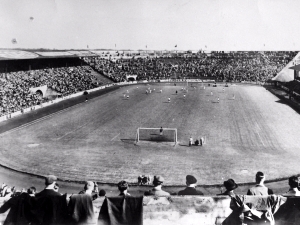
Decrepitude
If the sporting aspect was relatively good for Antwerp, the infrastructures suffered from a total lack of maintenance.
At the end of the 80s, the upper (and therefore the most recent) of the end stands has worrying signs of fatigue. The upper
tiers are closed and the capacity will inevitably go down.
On May 14th, 1991, Antwerp played its last game in a Bosuil having its historical form (friendly match against the Moroccan
club of IRT Tangier). The next day, bulldozers demolished the tribune side Deurne (the one on the right during the televised
matches). Four months later, the Atrium Complex was inaugurated with 800 business-seats.
In addition, the hooliganism was wreaking havoc at that time and a serious subdivision of supporters was applicable in the
stadium. As a result, the capacity fell to 20,300 places.
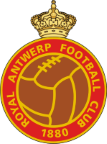
After a few bland seasons, the Antwerp is on the front of the stage (both Belgian and European) by winning its second Belgian
Cup in 1992 (the first was won in 1955). After a fierce final against Club Malinois (22 shots on goal were needed to name the
winner), the Coupe des Coupes found the valuable Great Old. After disposing of Glenavon FC (Northern Ireland), Admira Wacker Vienna
(Austria), Steaua Bucharest (Romania) and Spartak Moscow (Russia), the Antwerpers have crossed swords with the Italians of Parma.
The final, that year was held in the legendary Wembley, London seeing, for the occasion, the landing of 20,000 RAFC's fans. But
Parma was too strong and the Antwerp returned to the Bosuil with a 3-1 defeat in the suitcases.
This final has been the last played by a Belgian club... The golden age of the Antwerp was at the same time behind it.
If some matches of Intertoto Cup have still taken place at the end of the 90's, the Antwerp has slided irremediably towards
the problems.
The year 2000 should have been that of renewal for the Bosuil. The Euro 2000 was organized jointly by Belgium and the Netherlands
and logically, a city like Antwerp had been associated with the project. Unfortunately, internal quarrels between the club and the
city have pushed the organization of the Euro to eject Antwerp. Plans had been drawn but never work will start.
Worse, the end tribune (Merksem side) is closed by the city, forcing the Reds and Whites to play the first games of the
1997-1998 season away from home. This chaotic start of the competition has been fatal to the club and a fall in Division
2 hasl awaited the Antwerp at the end of the season. The next season in D2 has seen the stadium be amputated from the tribune.
Fortunately, the Antwerp goes back immediately in first division.
But the rot set in : the finances are in the red and several closures of the stadium intervene (fall of part of the roof of
the stand, collapse of a lighting pylon after a storm, fences of non-compliant security). A new stand of 3,000 seats is
nevertheless built behind the goal. Subsequently, a new sporting relegation pushes the Antwerpians out of the D1.
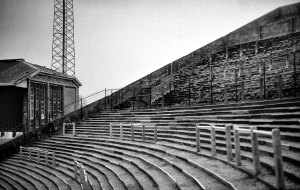
In Division 2
Between 2004 and 2016, the glorious Antwerp club stayed in D2.
Between power struggles and financial worries, the Antwerp still manages to live seasons quiet on the sporting level, with
from time to time a qualification for the Final Tour.
This forced stay at the second level of the competition forces the club to have to stay with this stadium become frankly obsolete.
A small refreshment took place in 2008 but the illusion did not last long.
And yet... If the amateur of football wanted to discover the last true stadium in Belgium, it is indeed with the Bosuil that he
would have found it. Here, the traditions are still more than alive, we feel that the place has a great experience and the
atmosphere of match is still hot.
Despite overall disappointing results, the RAFC was able to count on an average of 6,000 spectators. Not all D1 clubs can say the same.

In terms of infrastructure, a closure of the main stand has felt in 2014.
Only the parts under the bleachers (cloakrooms, refreshments, offices) were still accessible but the bleachers and the electrical
installation were declared dangerous. In addition, the roof was no longer one.
Immediately, the club takes things in hand and renovates block E, reserved for visitors. Unfortunately, the authorities still
don't allow the reuse of the main stand : a renovation of the building in depth became a necessity. Rather than demolish
everything, the club has a solution for the least original : the walls are preserved, the roof renovated but the concrete
steps are demolished and replaced by a metal structure.
The inauguration took place in April 2015. The aesthetics of the new stand could lend a smile but no matter, the Antwerp
recovered the use of its venerable main stand. The capacity of the stadium drops to 12,975 places.
The centenary of the stadium arrived slowly and we could hope to celebrate in the original facilities, which would have always been a unique case. Unfortunately for the old walls, the sport level was rising again and the return to D1 of Great Old could finally be celebrated at the end of the 2015-2016 season.
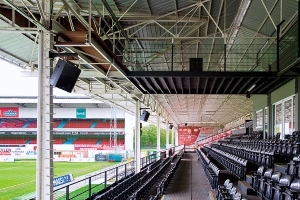
Demolition of a newly renovated tribune
The season 2016-2017 sees the return in Division 1 of the dean of Belgian clubs. Finally !
But the Antwerp wasn't free from its infrastructure concerns. The authorities did not grant permission for the use of the main stand,
which had been freshly renovated. An aberration !
The Antwerp had no choice but to say goodbye to his relic and demolish everything. In just 20 weeks, a brand new (and huge)
stand out of the ground : 5,600 seats, skyboxes, business-seats and a 700-seat restaurant. Once inaugurated, the project of
rebuilding the three other tribunes appeared quickly.
Given the presence of skyboxes and business-seats in the new main stand, the Atrium Complex has become superfluous : it has been
demolished in 2019. Then remain the stand built in 2001 and finally the venerable tribune 2, the soul of Bosuil. Once the latter
has disappeared, the Hell of Deurne will be nothing more than a memory and the Antwerp fans will have to settle for a modern arena
as there are hundreds of others.
The era of football stadia is over, place to sanitized theaters.
Pictures
Bosuilstadion
Velodrome Zurenborg (1897-1903).
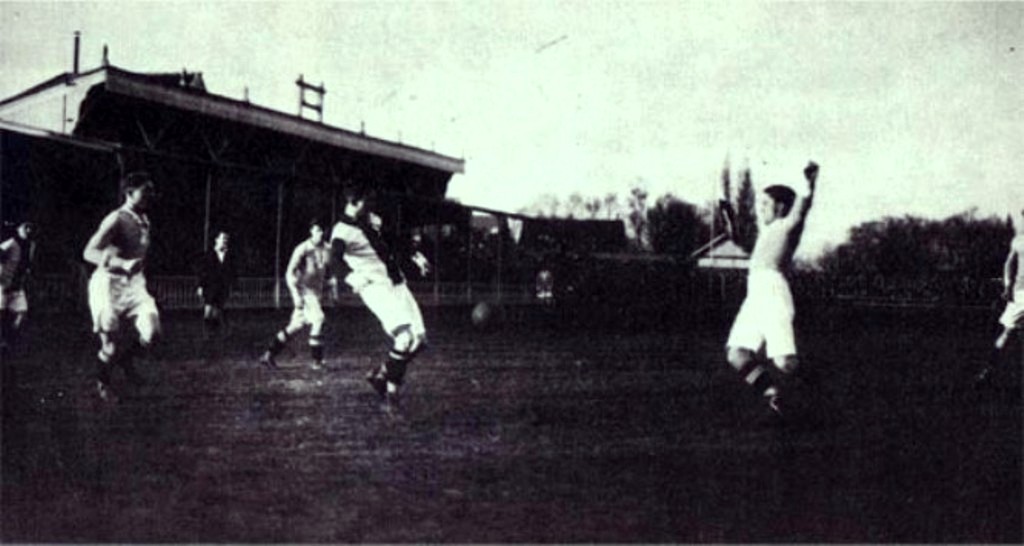
Bosuilstadion
Broodstraat Stadion, capacity of 5,350 places (1908-1923).
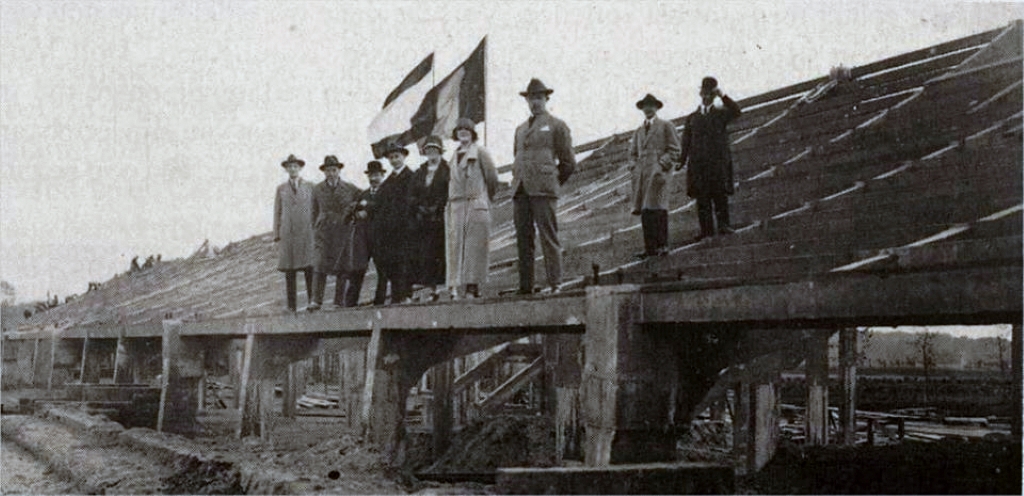
Bosuilstadion
Beginning of the construction of the Bosuil in 1923. This structure will remain standing until 2015.
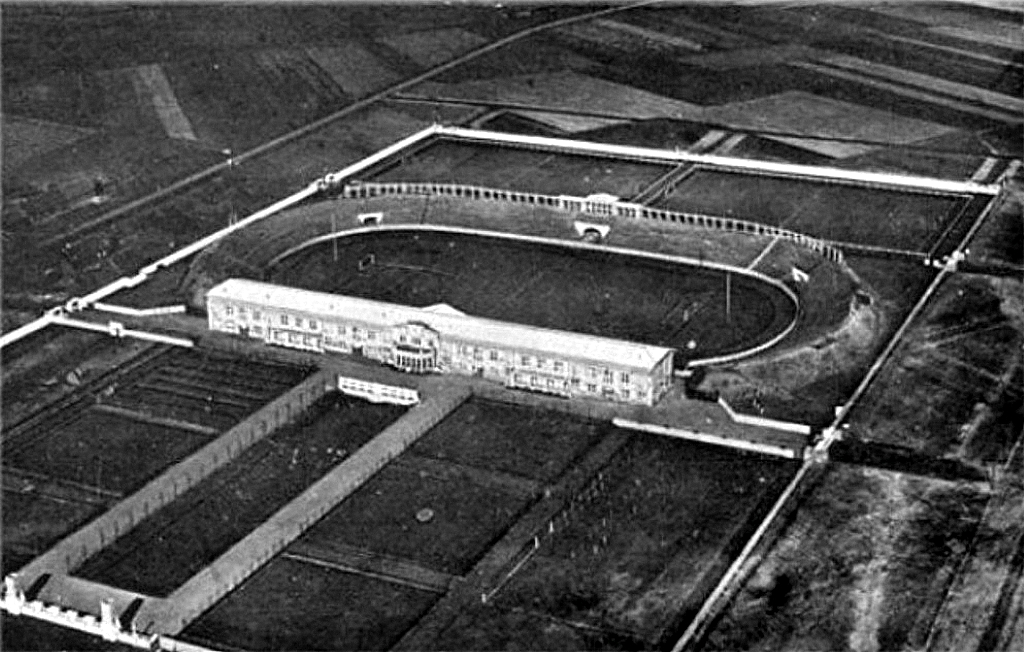
Bosuilstadion
The Bosuil at its inauguration, in 1923.
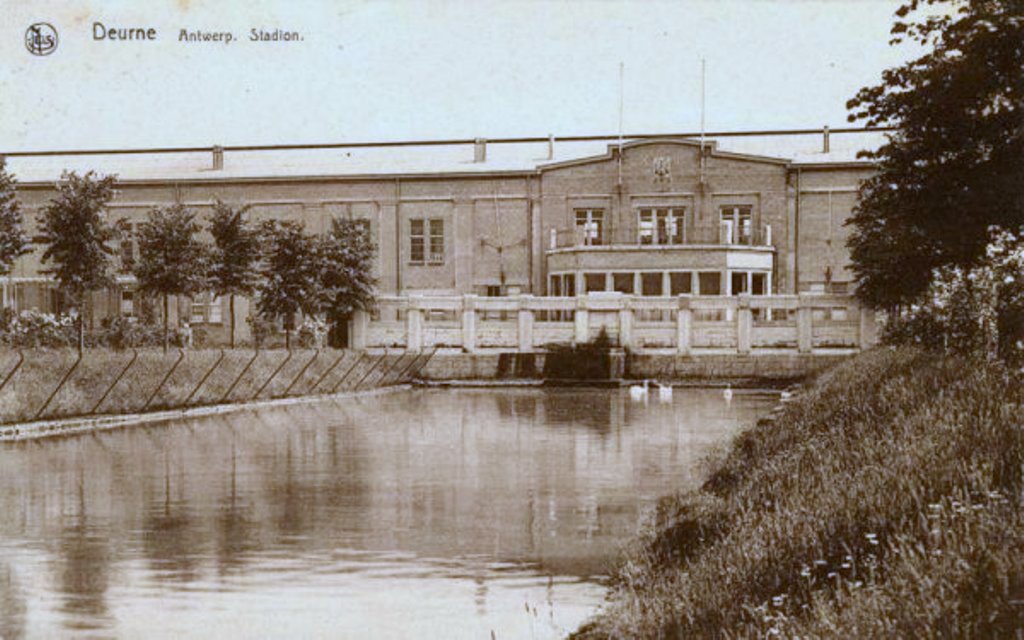
Bosuilstadion
The main stand, and its pond.
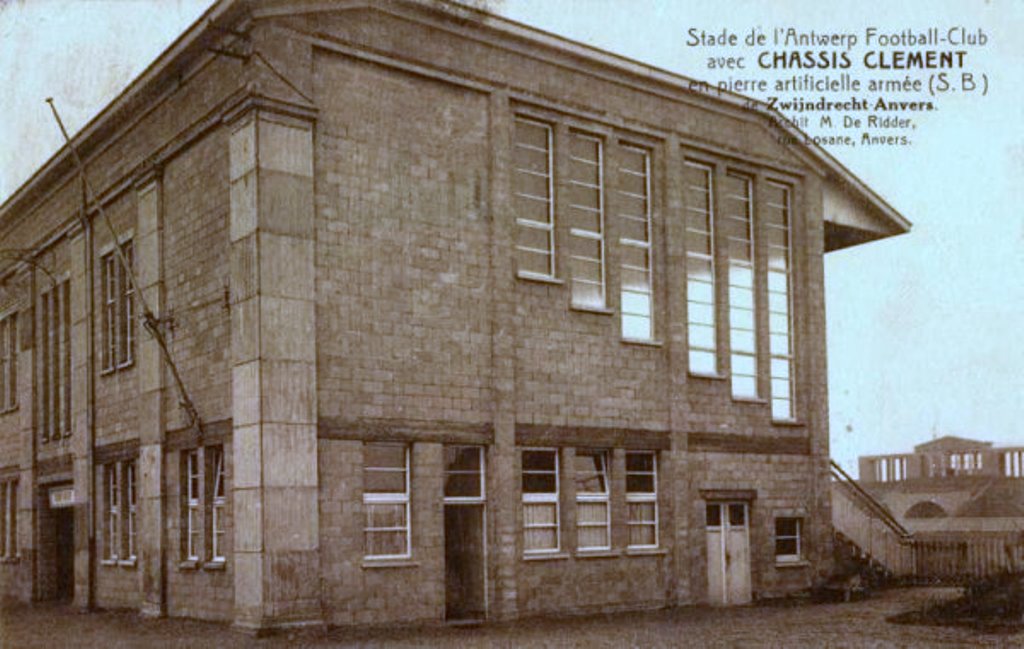
Bosuilstadion
The stand, built in "artificial reinforced stone".
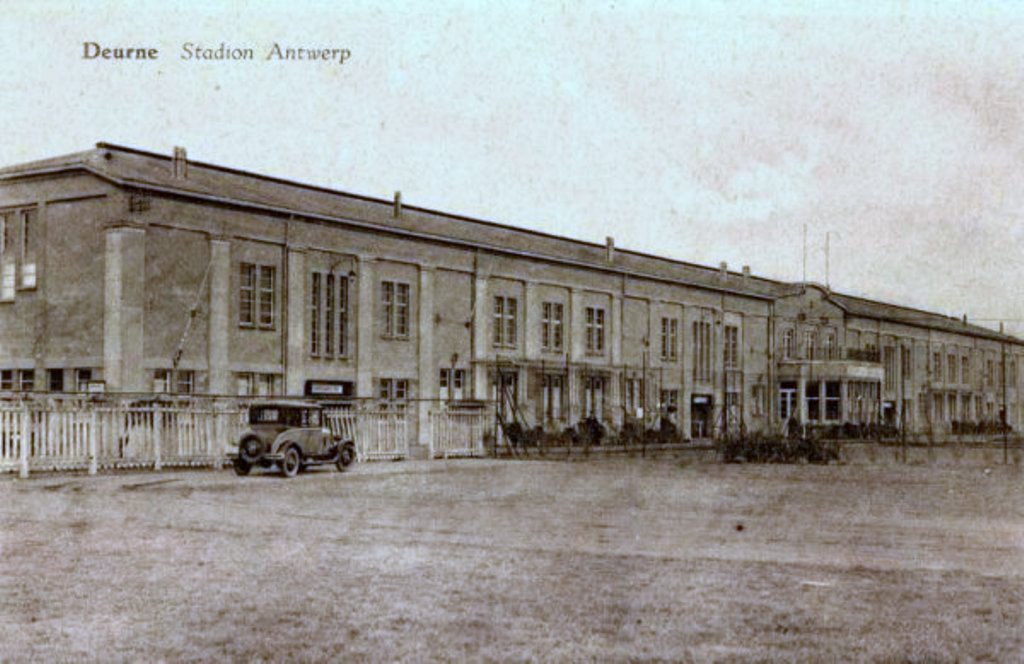
Bosuilstadion
A long facade with some suspicions of Art Deco.
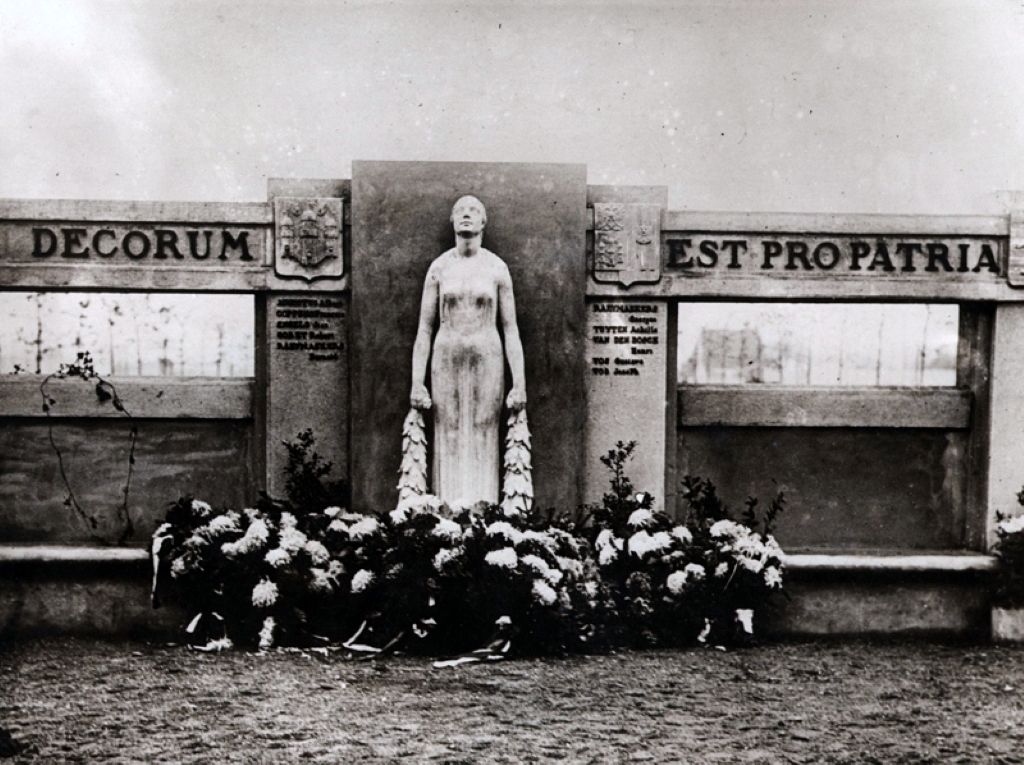
Bosuilstadion
The monument erected in honor of members of Royal Antwerp FC who died during the two world wars. Scandalously demolished in 1980.
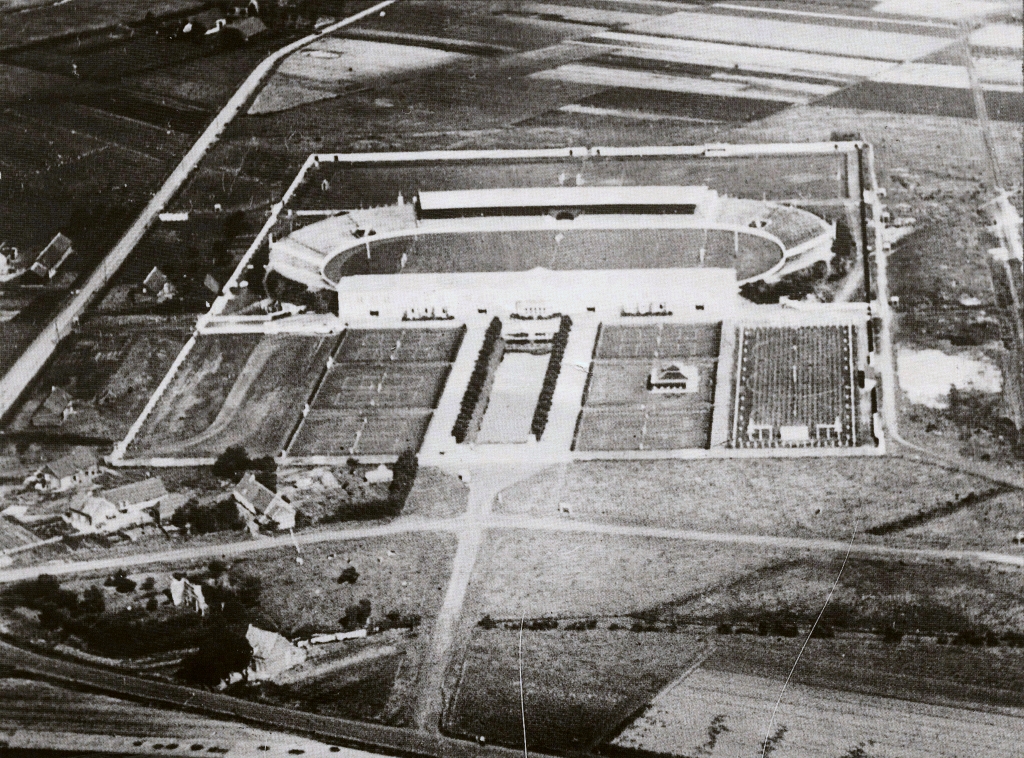
Bosuilstadion
Aerial view of the stadium in 1930, shortly before the first expansion. The colonnade has already disappeared.
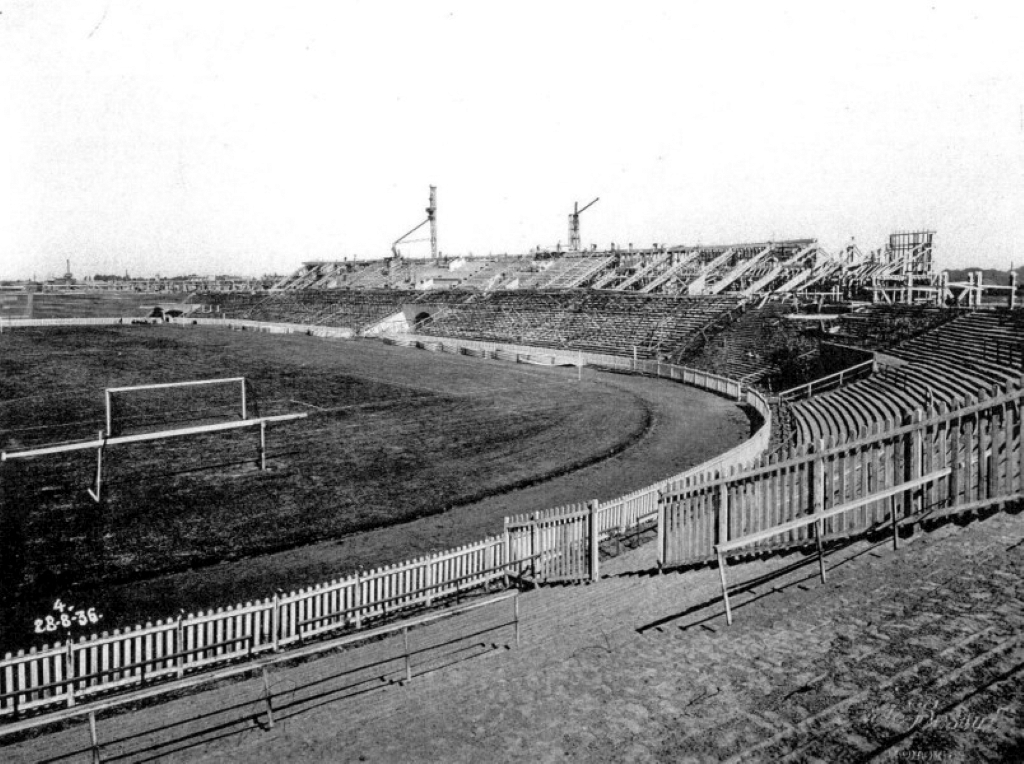
Bosuilstadion
The expansion works in 1936. The stadium, already monumental, becomes gigantic.
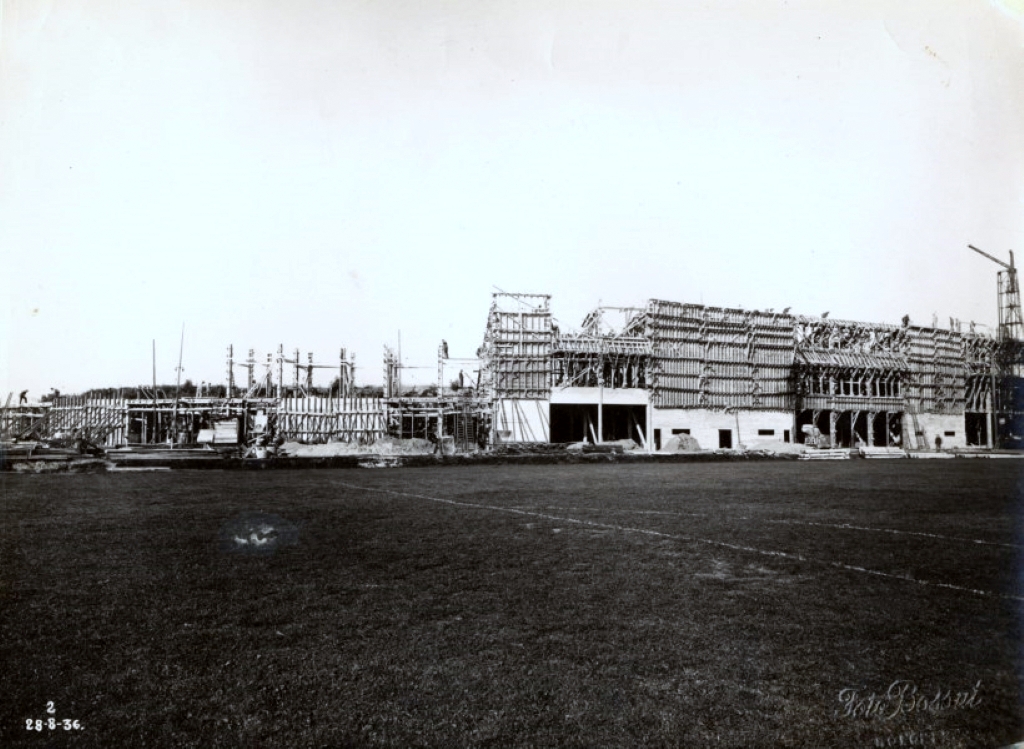
Bosuilstadion
The capacity increases from 38,000 to almost 50,700 places.
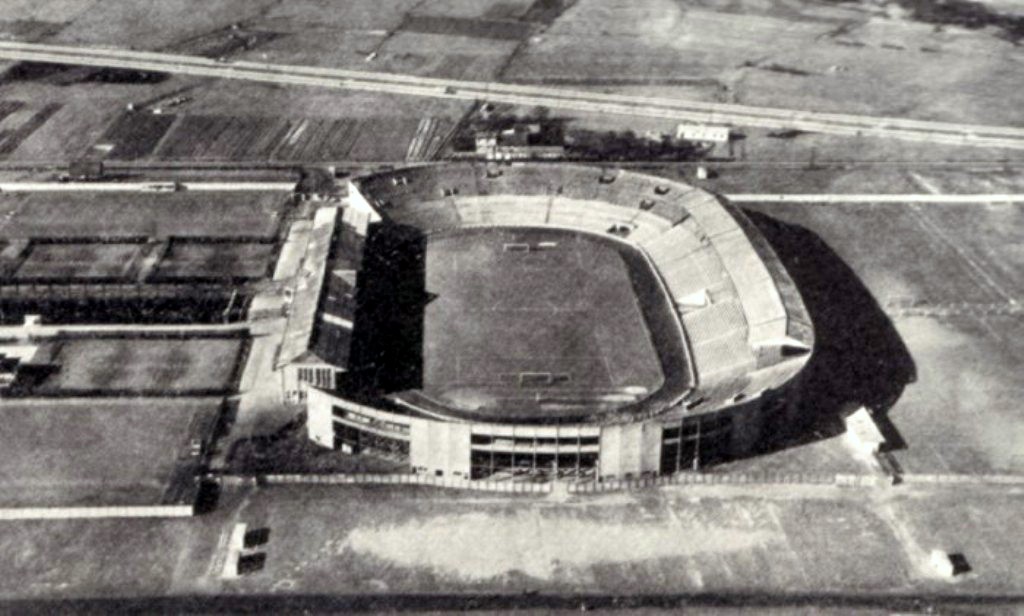
Bosuilstadion
Just after the first extension works, in 1937.
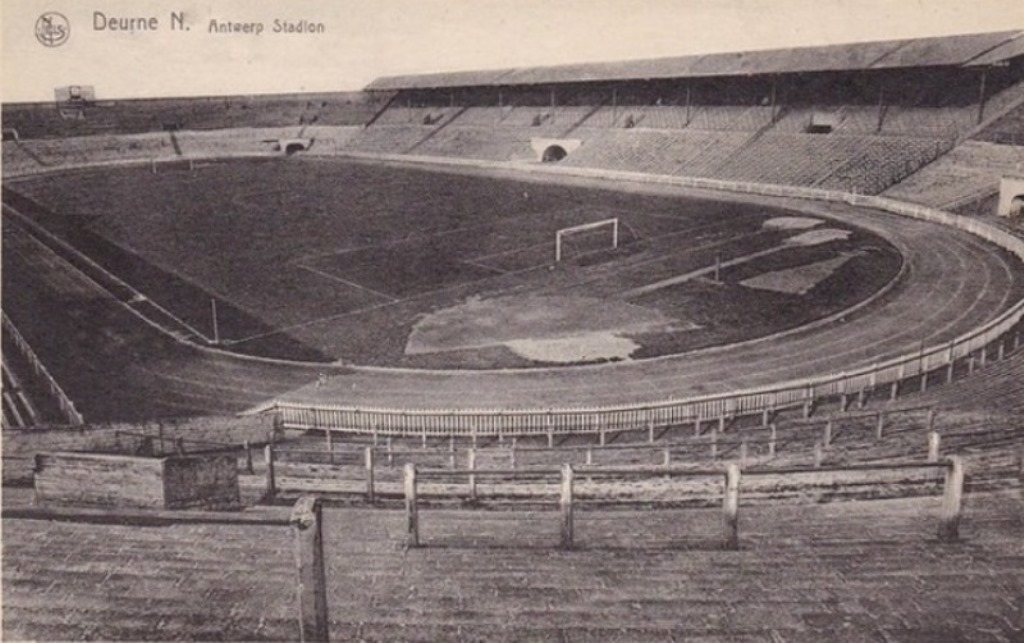
Bosuilstadion
The interior of the newly enlarged stadium.
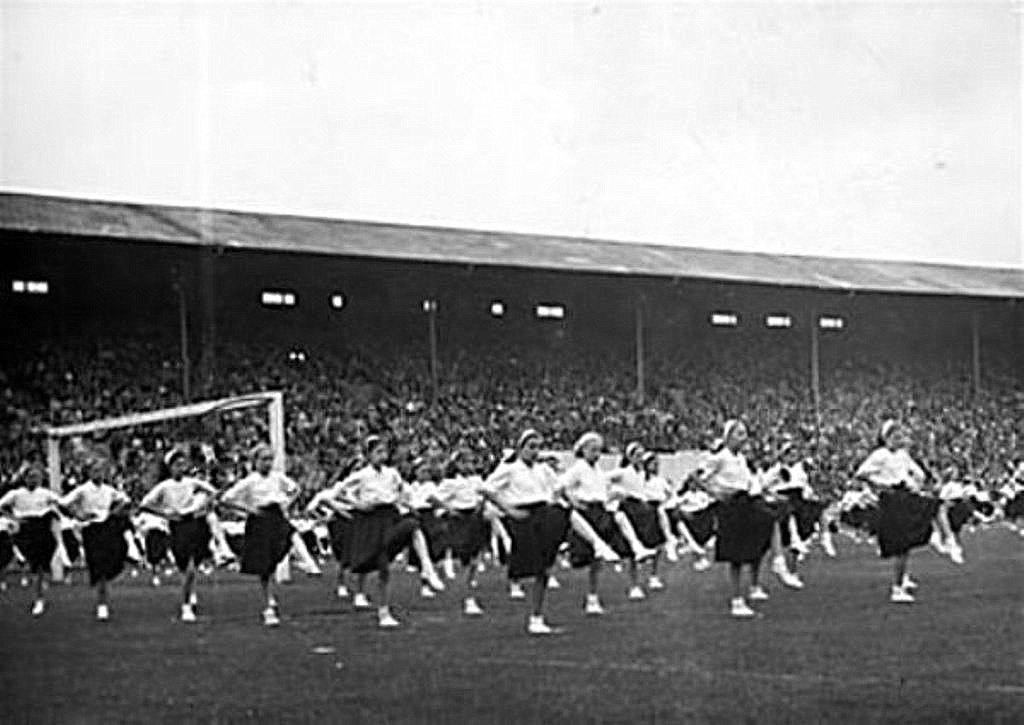
Bosuilstadion
Gymnastics Festival organized by the Antwerp Catholic Youth on June 11, 1949. There were up to 20,000 participants.
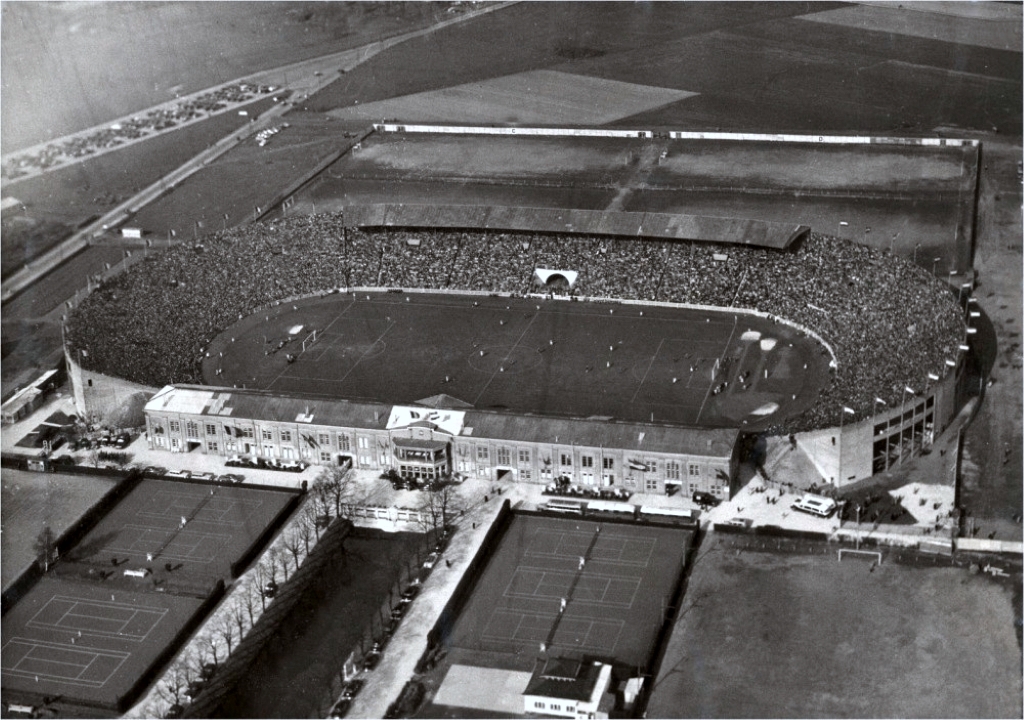
Bosuilstadion
The stadium of Deurne during Belgium-Netherlands (2-0) on April 16, 1950 with 45.432 spectators present.
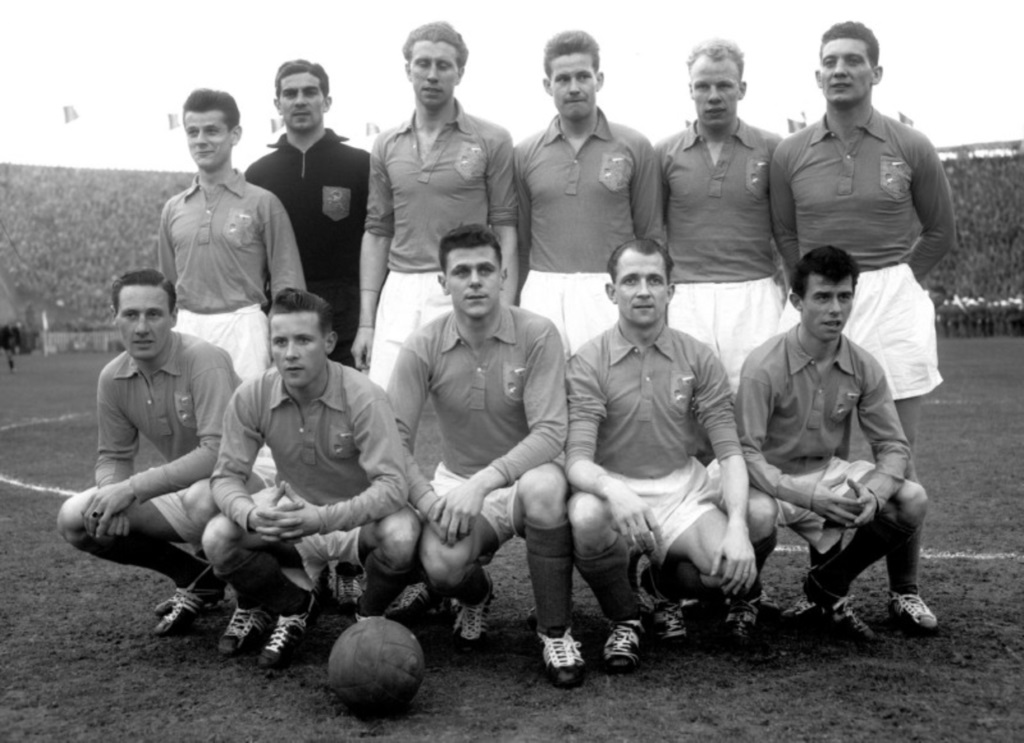
Bosuilstadion
One of the traditional Belgium - Netherlands in 1956 (0-1). The Netherlands team before the start of the match.
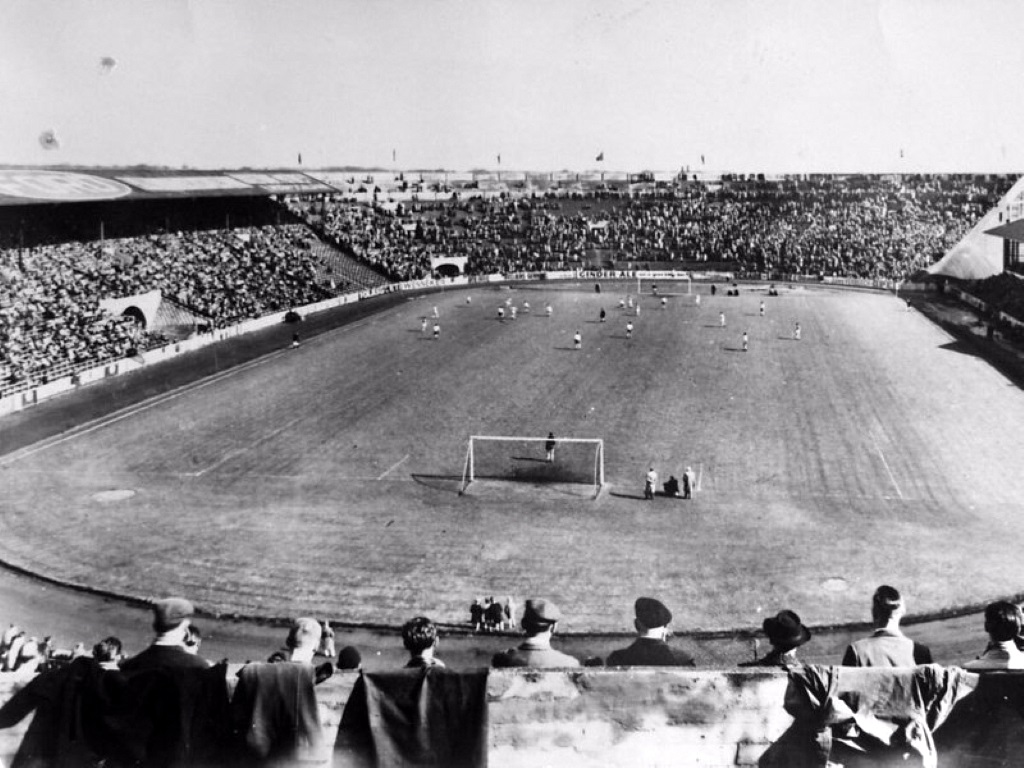
Bosuilstadion
During a match in 1957. The third floor of the stands has just been built the year before.
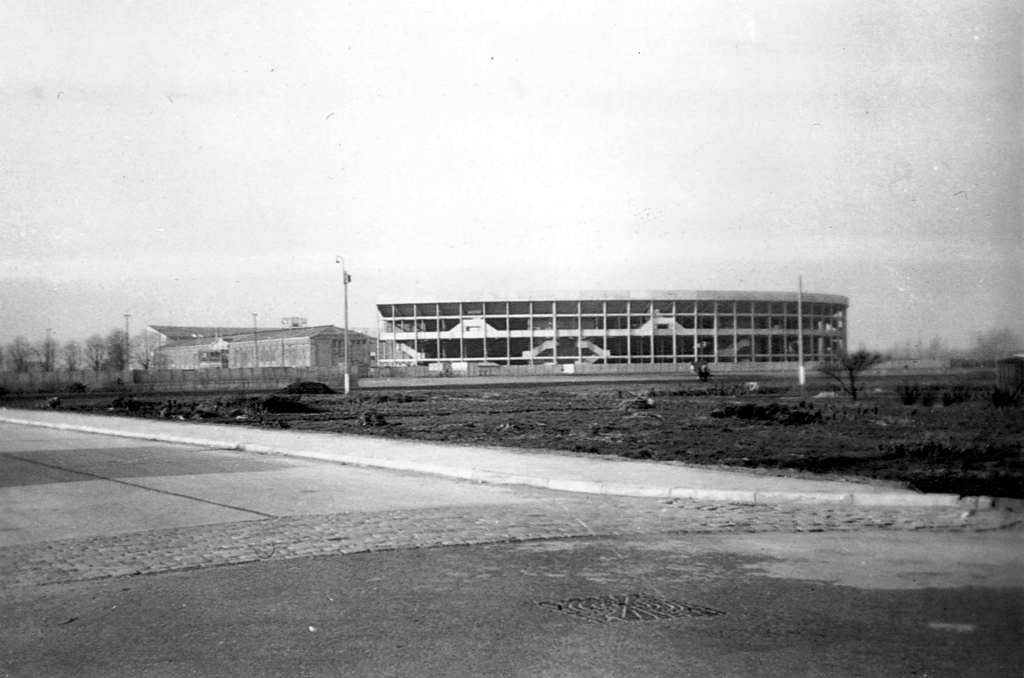
Bosuilstadion
The massive structure of the stadium since the Jan Welterslaan.
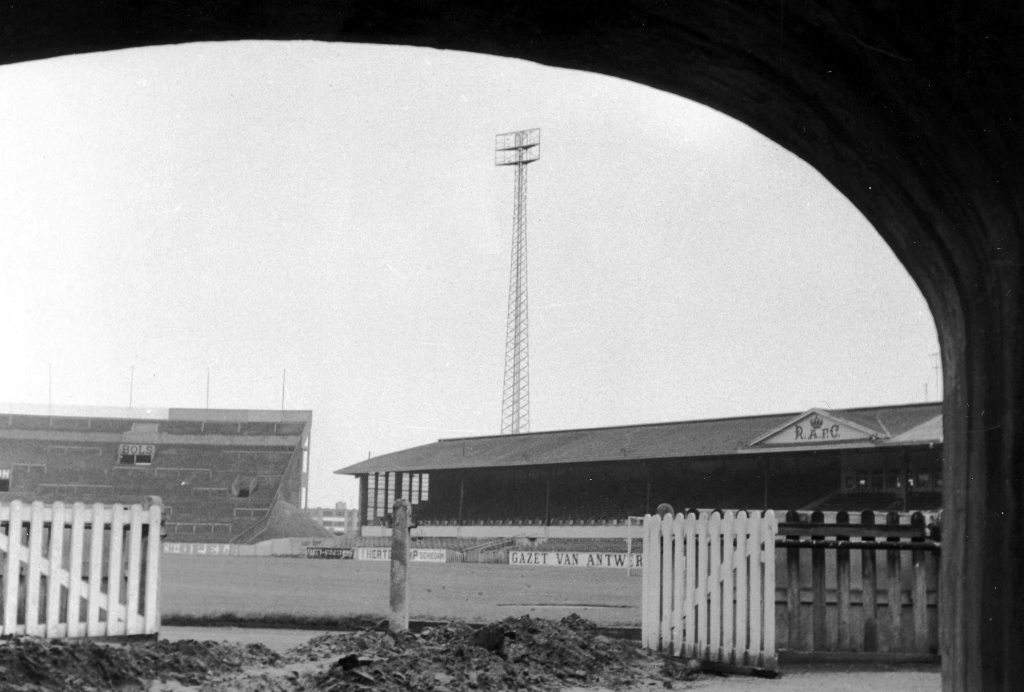
Bosuilstadion
On October 11, 1961 the lighting is inaugurated. This modern and powerful installation (500 lux) will remain in operation until 2017.
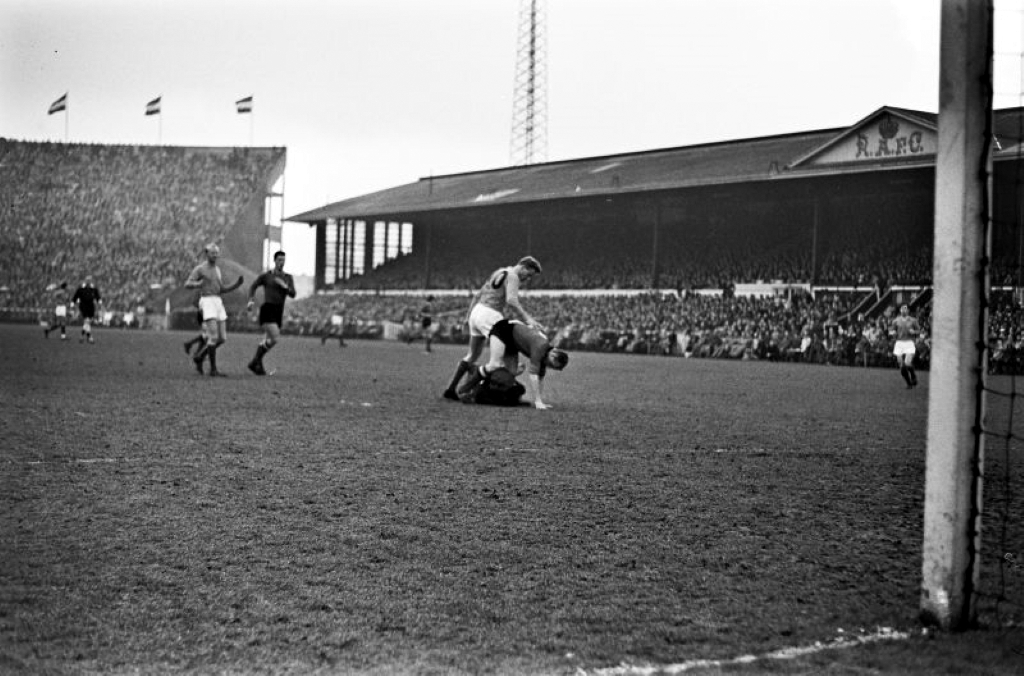
Bosuilstadion
Another traditional Belgium-Netherlands derby in the 1960's. The last derby will be played here in 1977 (0-2).
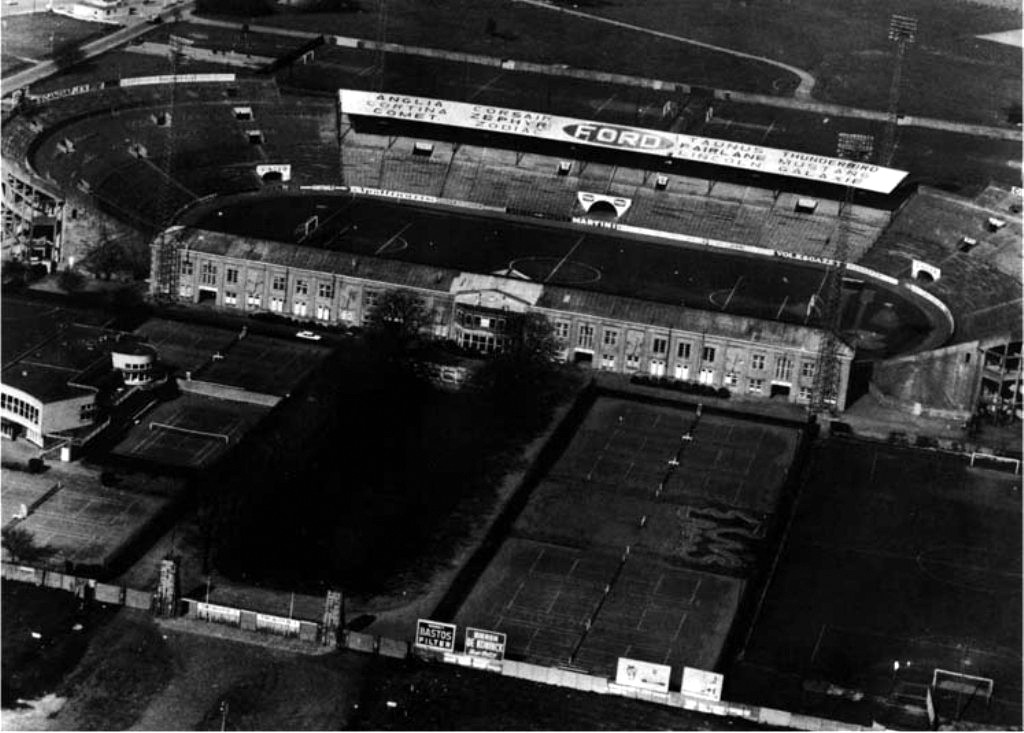
Bosuilstadion
The Bosuil ready to host Euro 72.
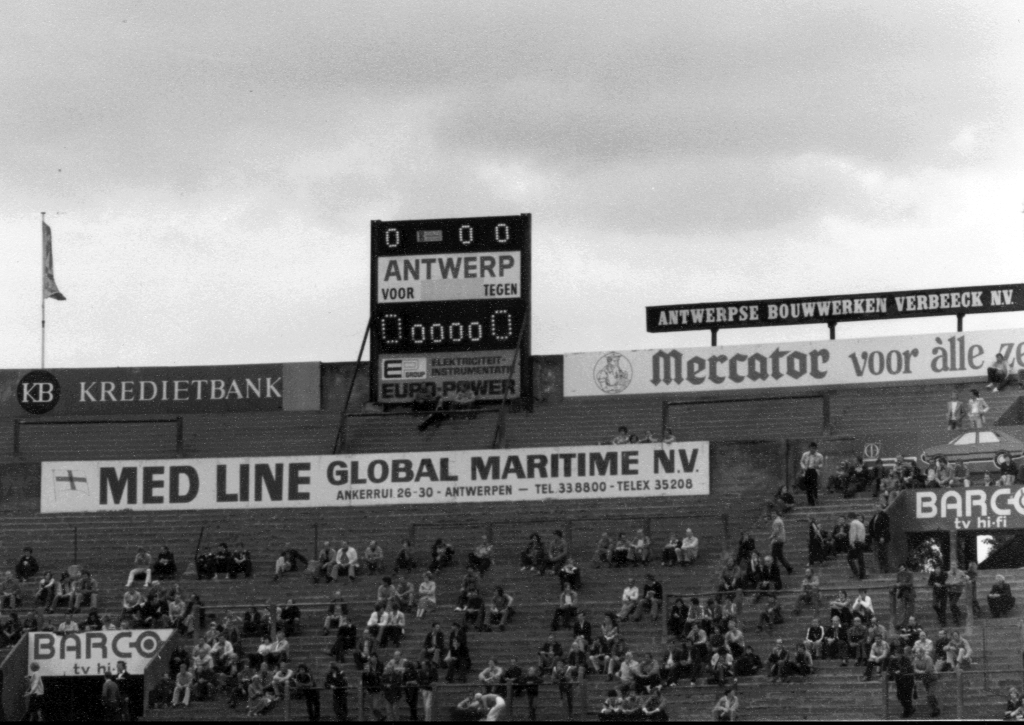
Bosuilstadion
The new scoreboard, installed in 1977. It will then be moved to the other goal stand.
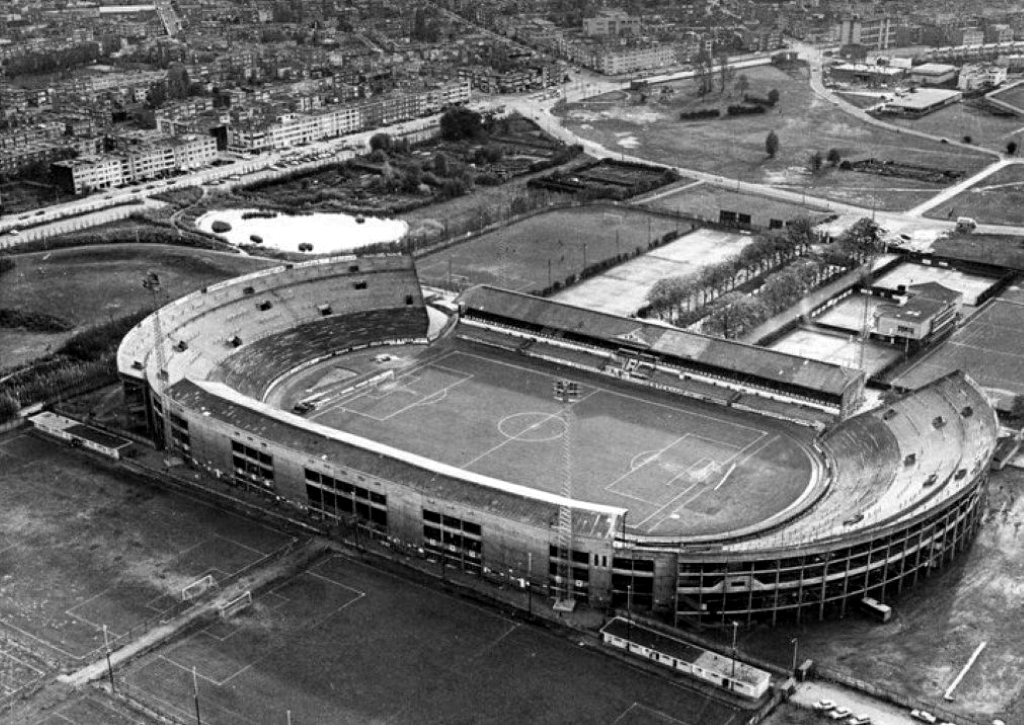
Bosuilstadion
In 1987, and for the last time, the big crowd rushes to Bosuil to attend the victory of Antwerp against Anderlecht (2-0). There were about 40,000 people in the stands.
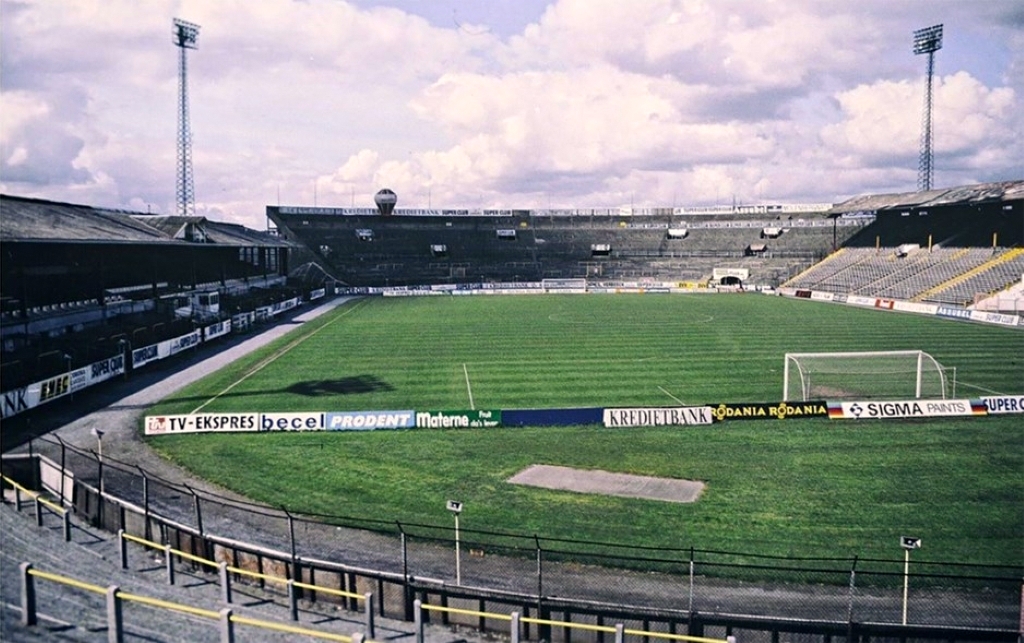
Bosuilstadion
One of the last views of the Bosuil fully operational.
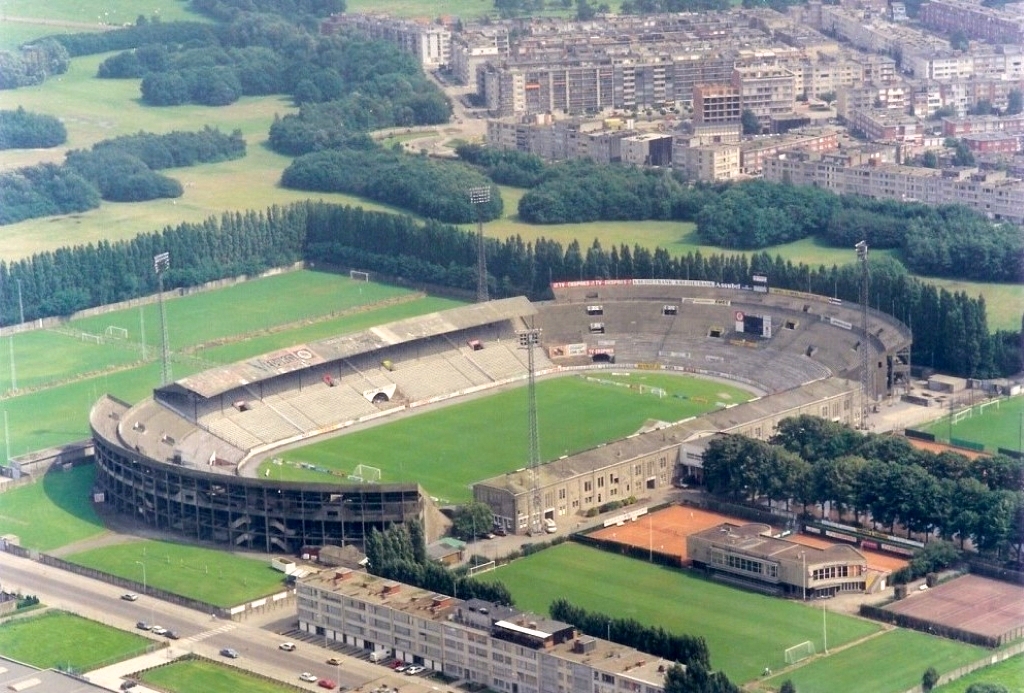
Bosuilstadion
At the very end of the 80's, the end stands partly closed. This is the beginning of the end for the Bosuil.
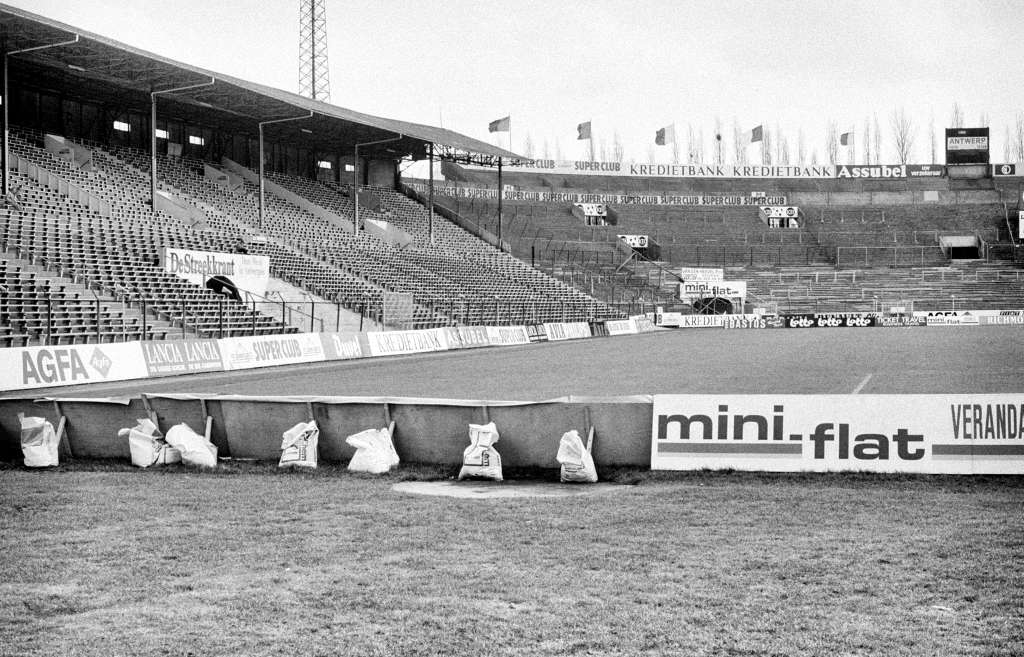
Bosuilstadion
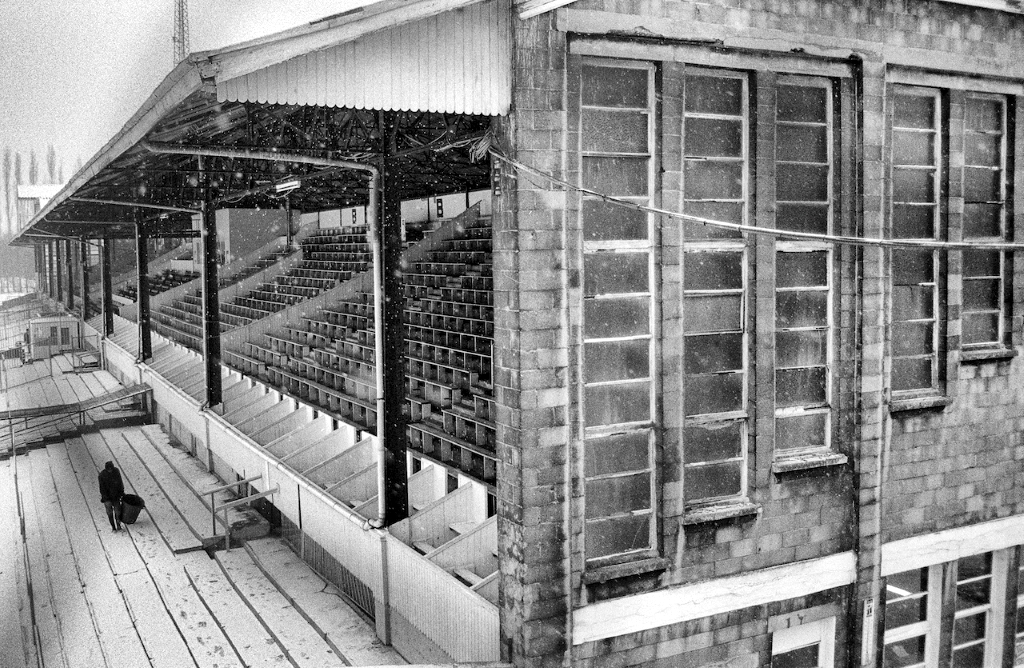
Bosuilstadion
The main stand, unchanged since 1923.
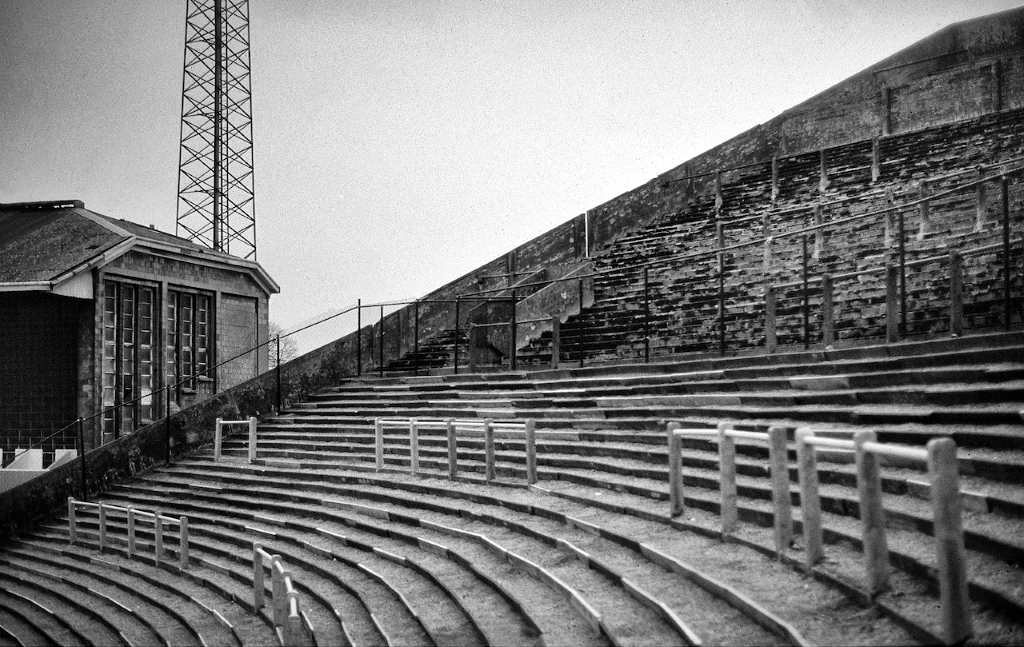
Bosuilstadion
The Merksem side stand 3. After the 3rd floor closed, it is the turn of the second to be condemned. The state of the stadium is deteriorating more and more.
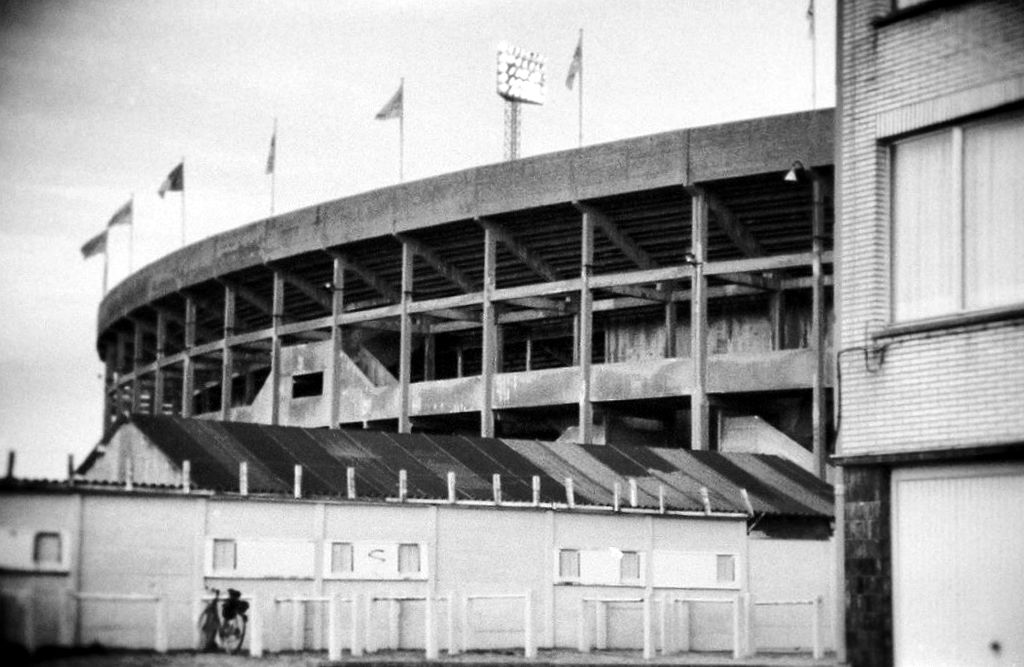
Bosuilstadion
Stand 3 from Oud Bosuilbaan.
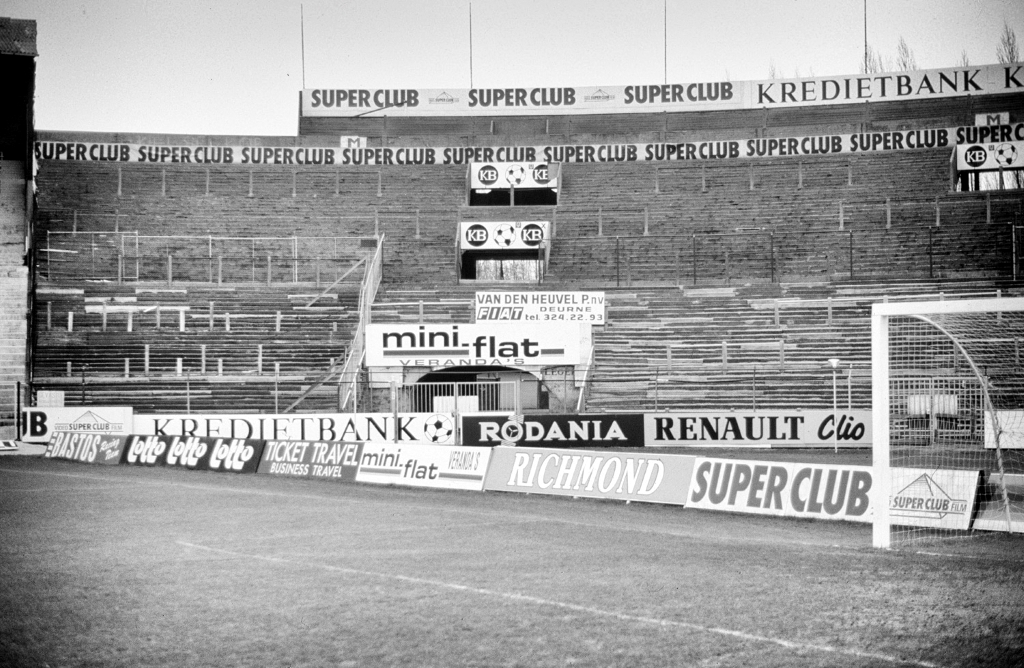
Bosuilstadion
The south stand 4 just before it was demolished in 1991. The stadium has lost its historic form at that time and the capacity has fell to 20,300 places.
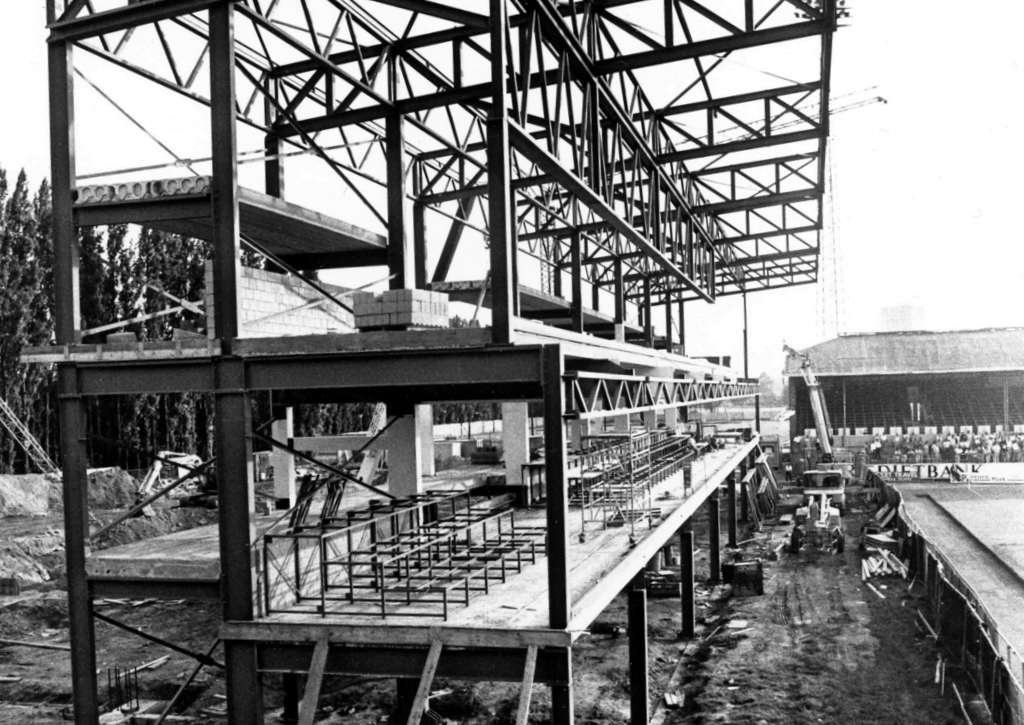
Bosuilstadion
In a few months, the Atrium Complex is open. Home to 800 business-seats, this building has disfigured the Bosuil for 28 years.
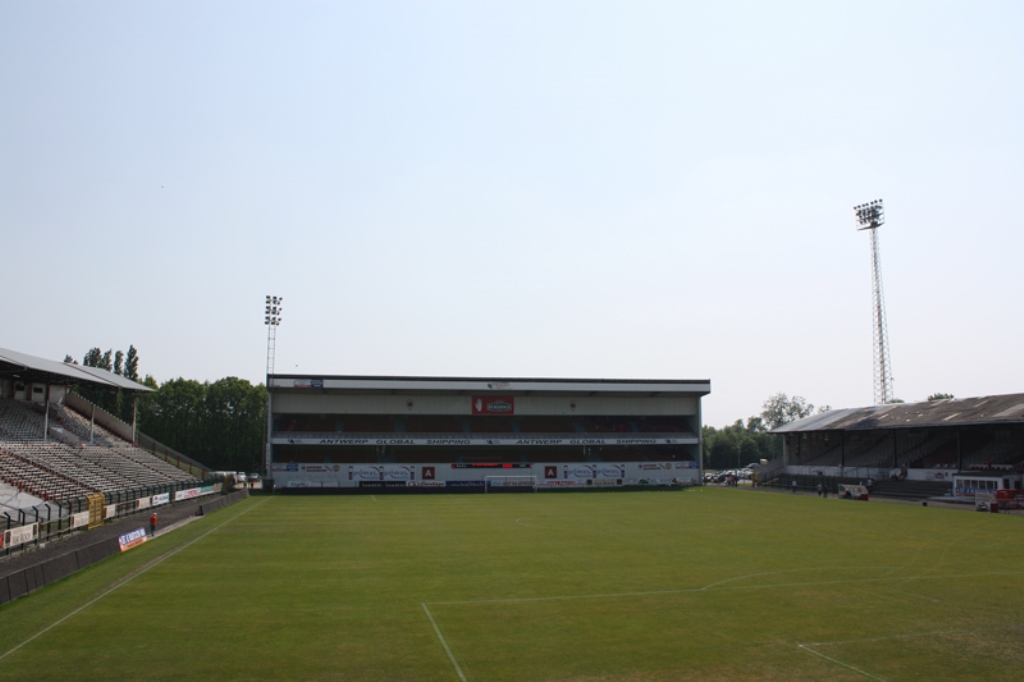
Bosuilstadion
Atrium Complex durint the 2000's.
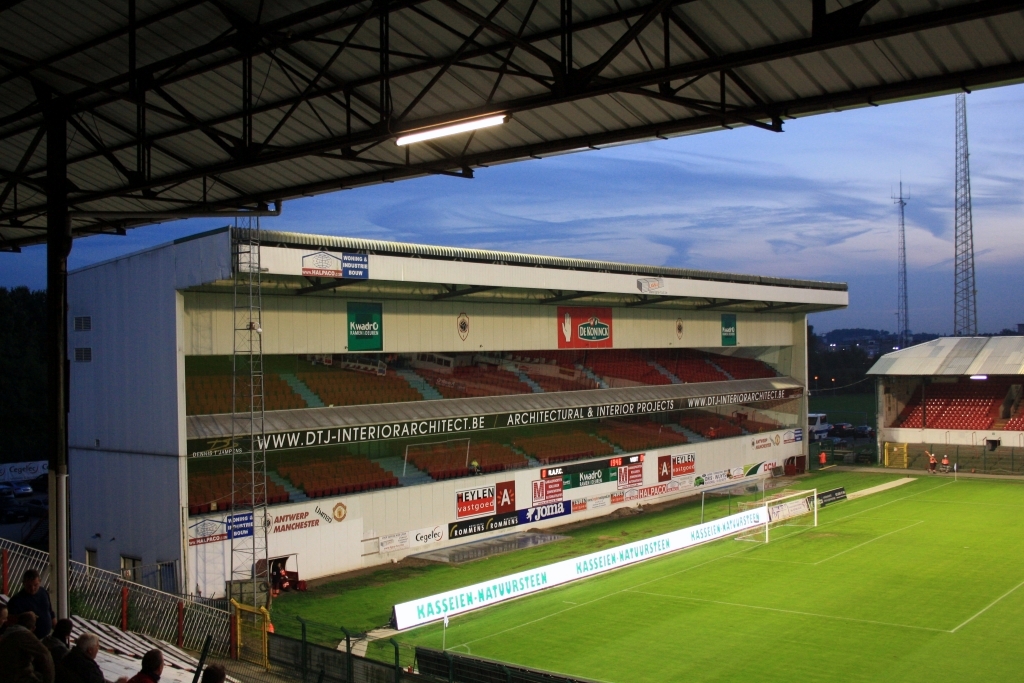
Bosuilstadion
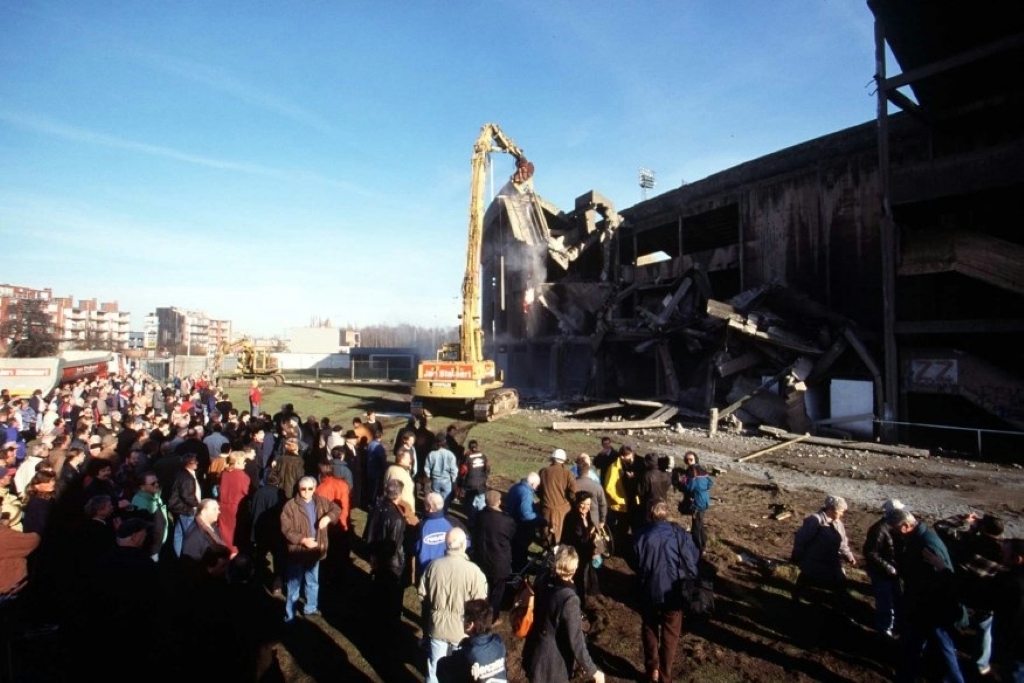
Bosuilstadion
Demolition of former stand 3 in 1999. Only the two side stands remain from the original stadium.
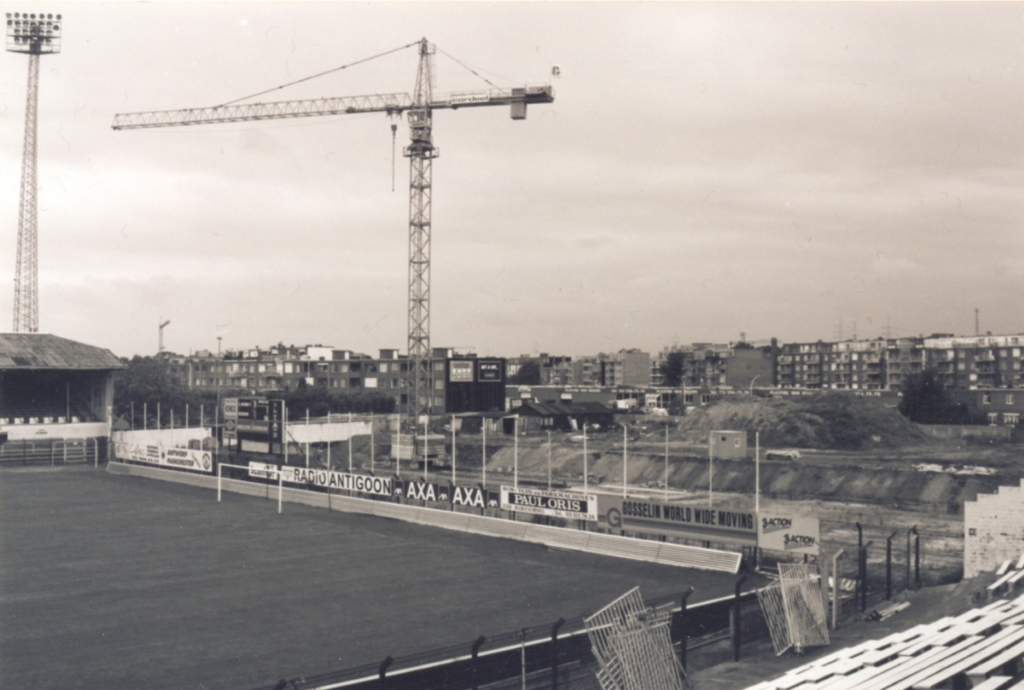
Bosuilstadion
In 2000, work began on the construction of the future grandstand 3.
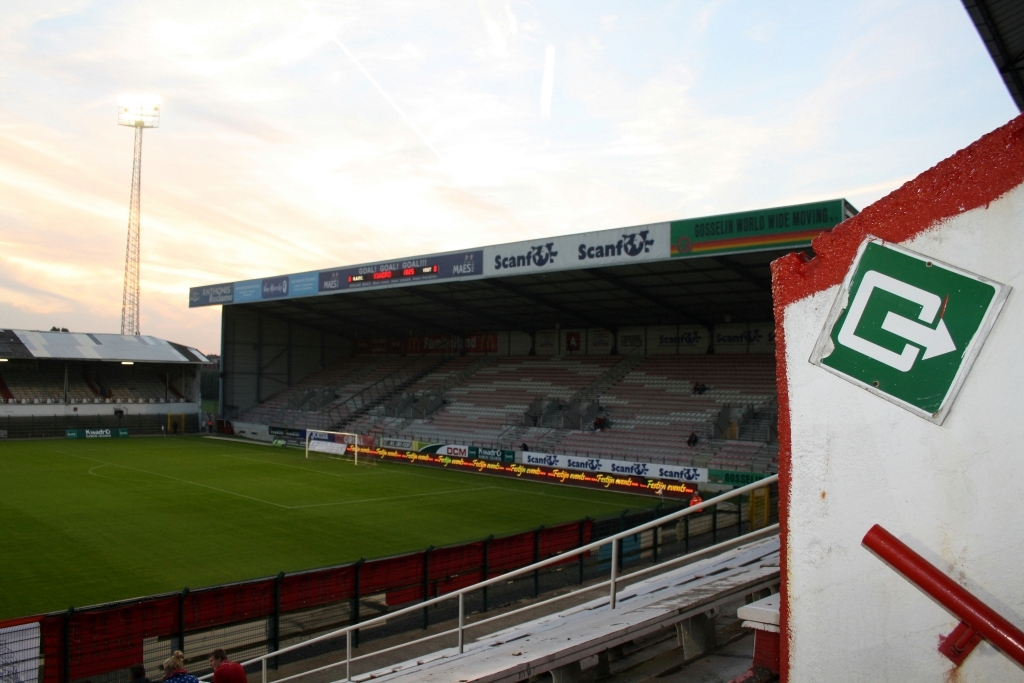
Bosuilstadion
The stand 3, built in 2001 and can accommodate a little less than 3,000 people. The Bosuil can accommodate from that moment about 16,500 people.
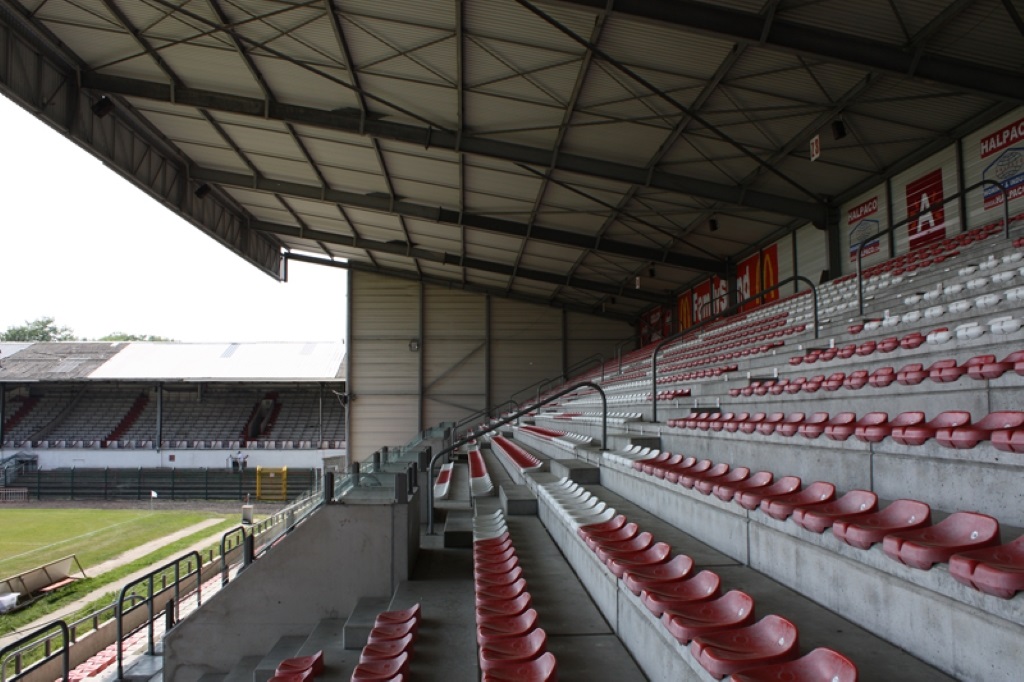
Bosuilstadion
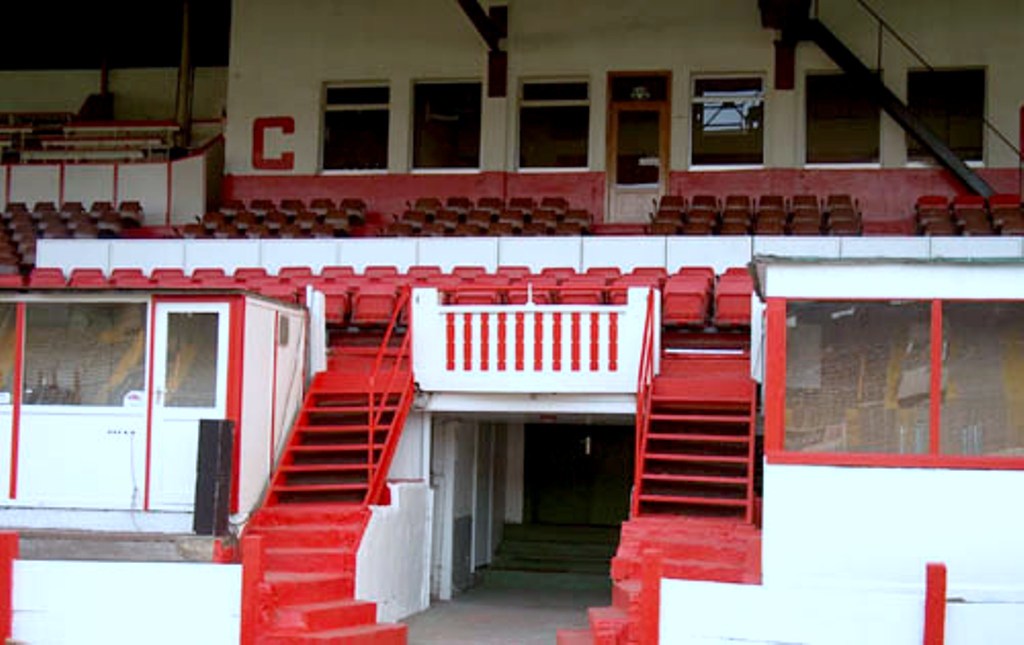
Bosuilstadion
The age-old main stand of 1923.
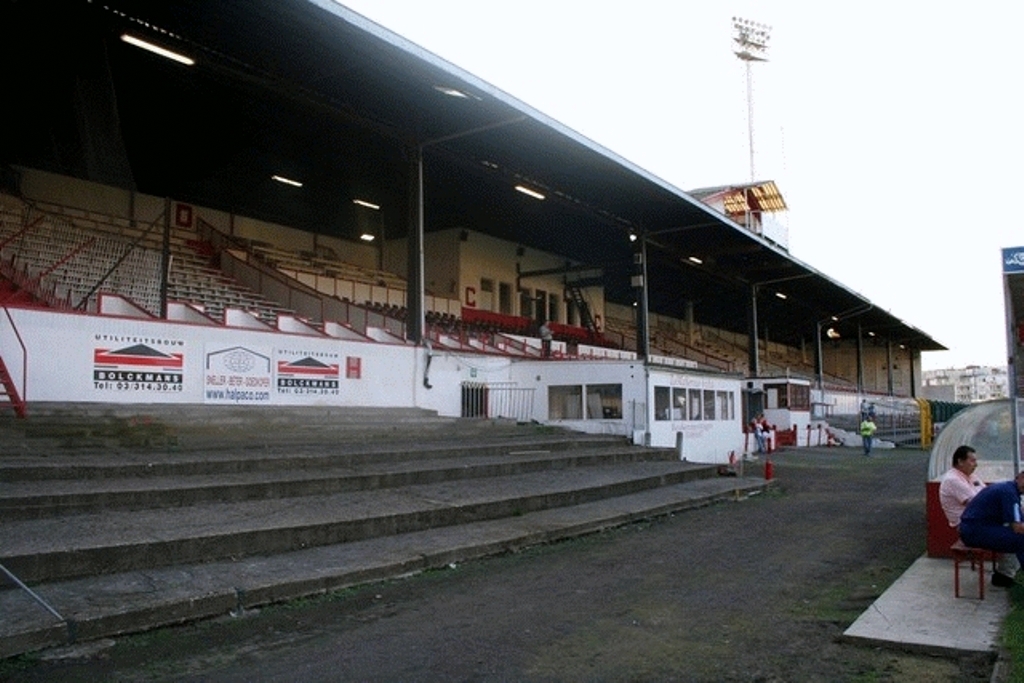
Bosuilstadion
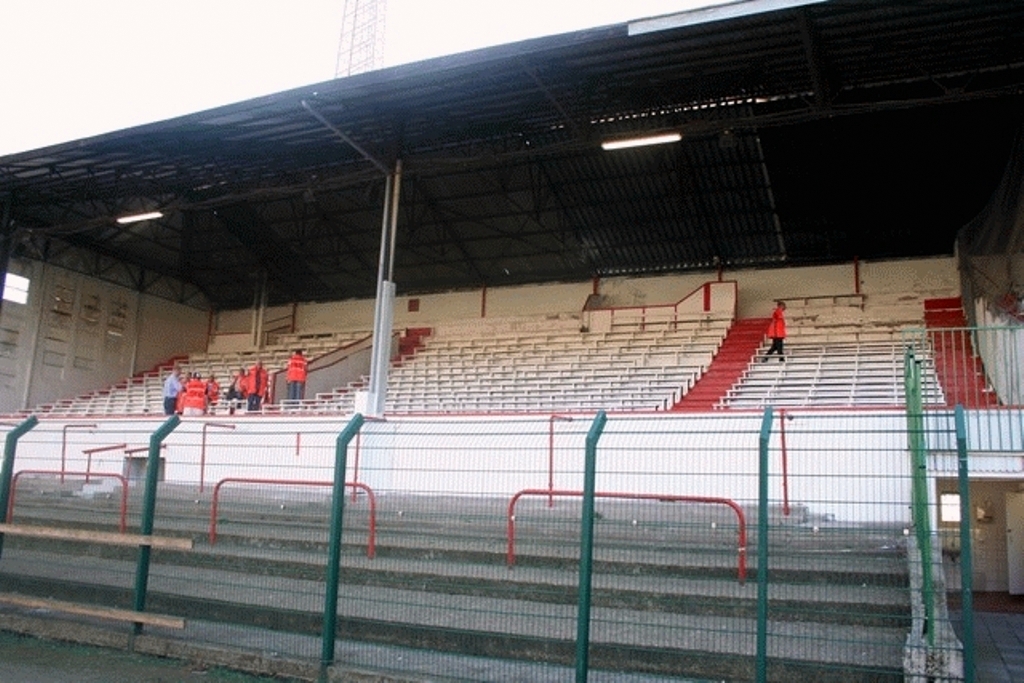
Bosuilstadion
Block E, reserved for visitors. This part of the main stand has been renovated for the first time in 2014 but hasn’t been used.
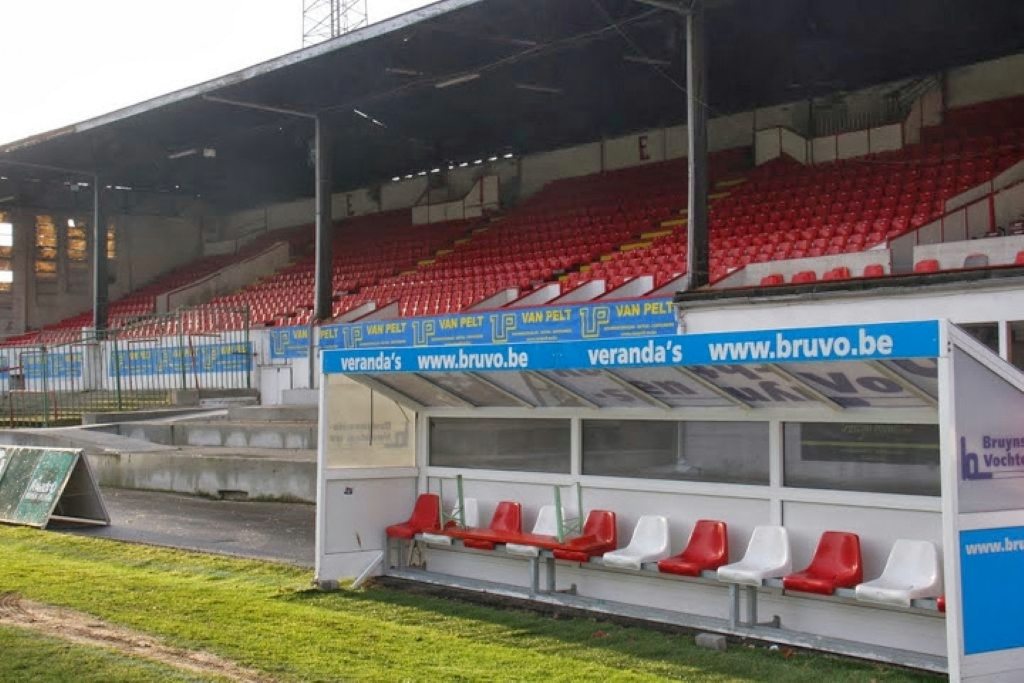
Bosuilstadion
Block E renovated and never used, to then be replaced by a metal structure in 2015 to finally be demolished in 2016.
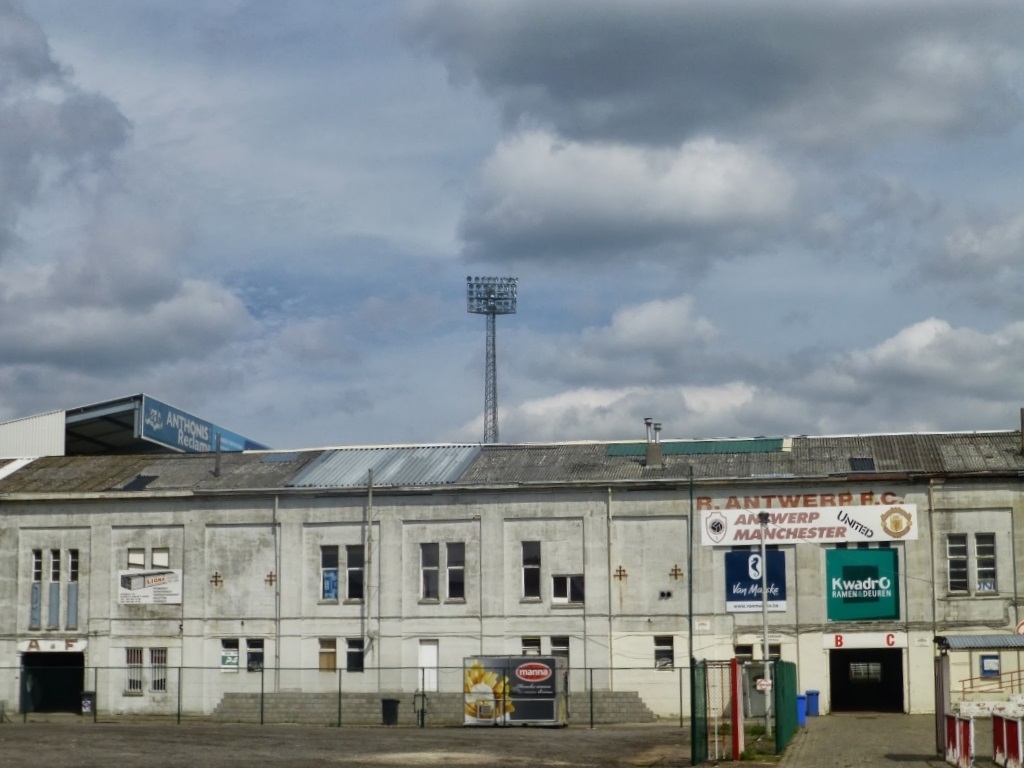
Bosuilstadion
Facade of the main stand.
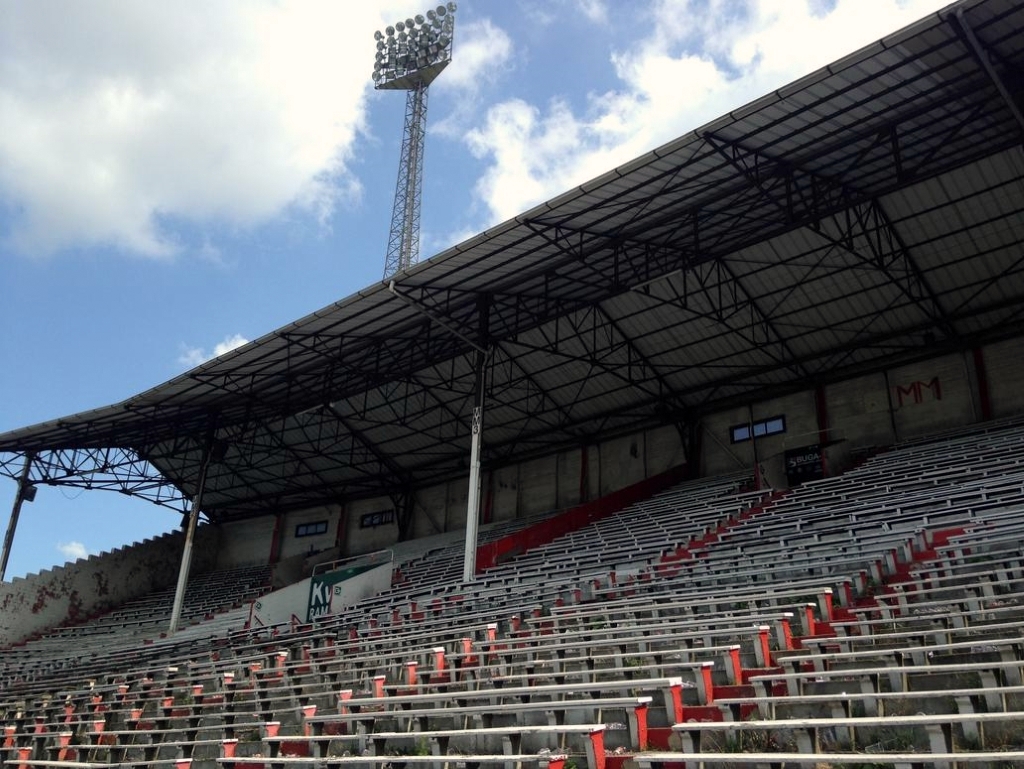
Bosuilstadion
The huge tribune 2.
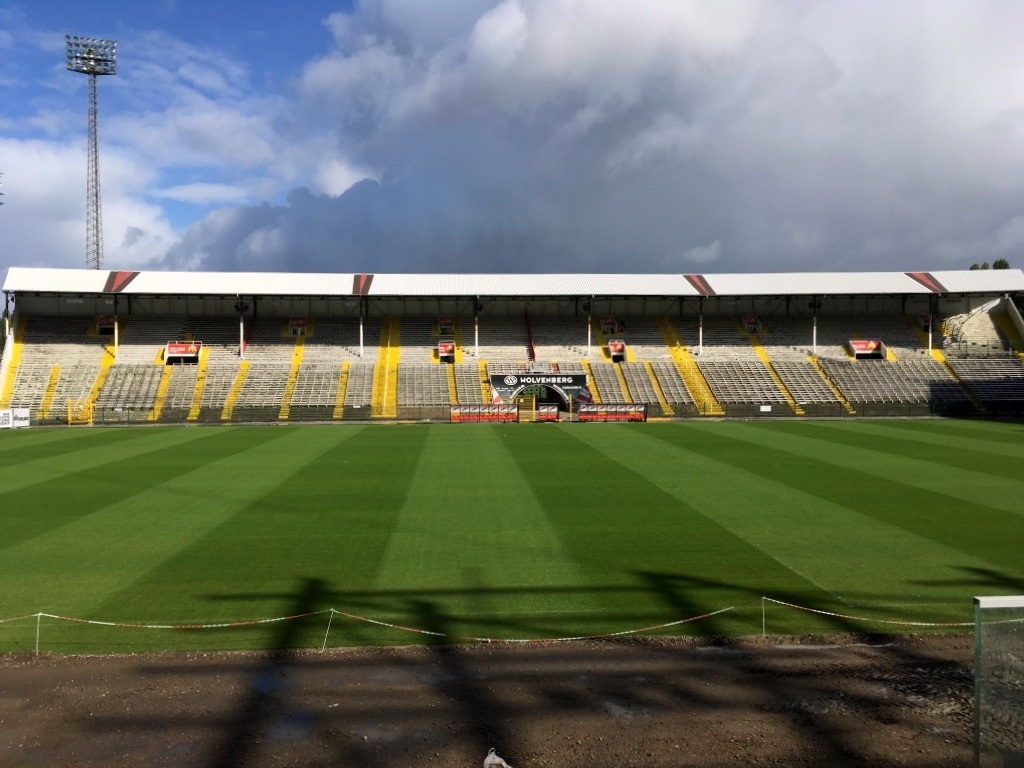
Bosuilstadion
With a capacity of between 11,000 and 13,000 seats, this is where the most ardent supporters of Antwerp meet.
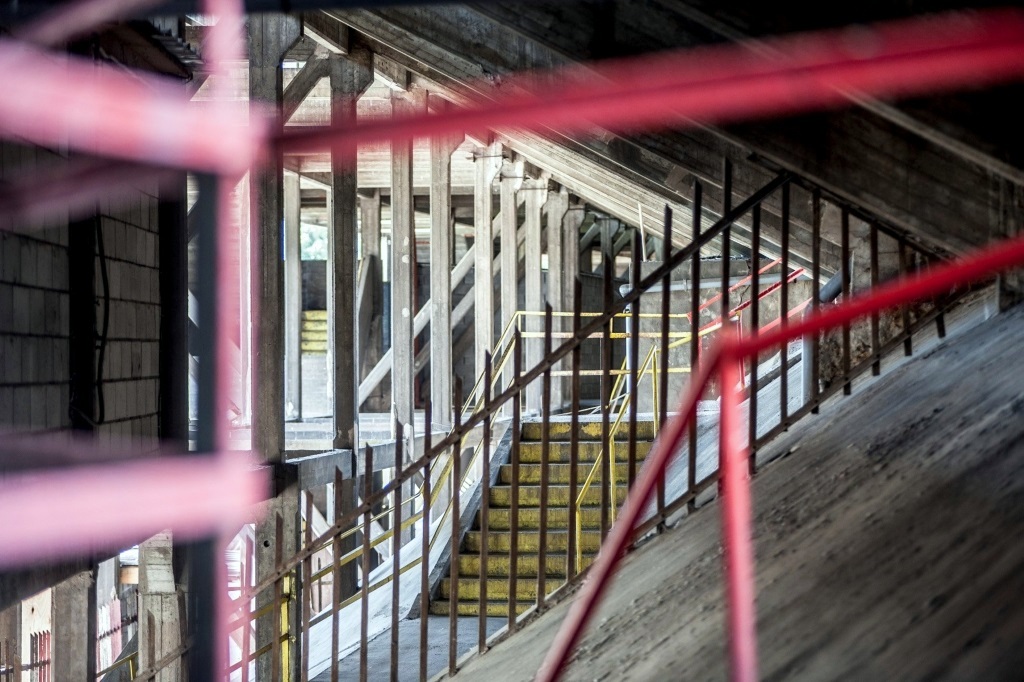
Bosuilstadion
The intricate internal structure of the stand 2.
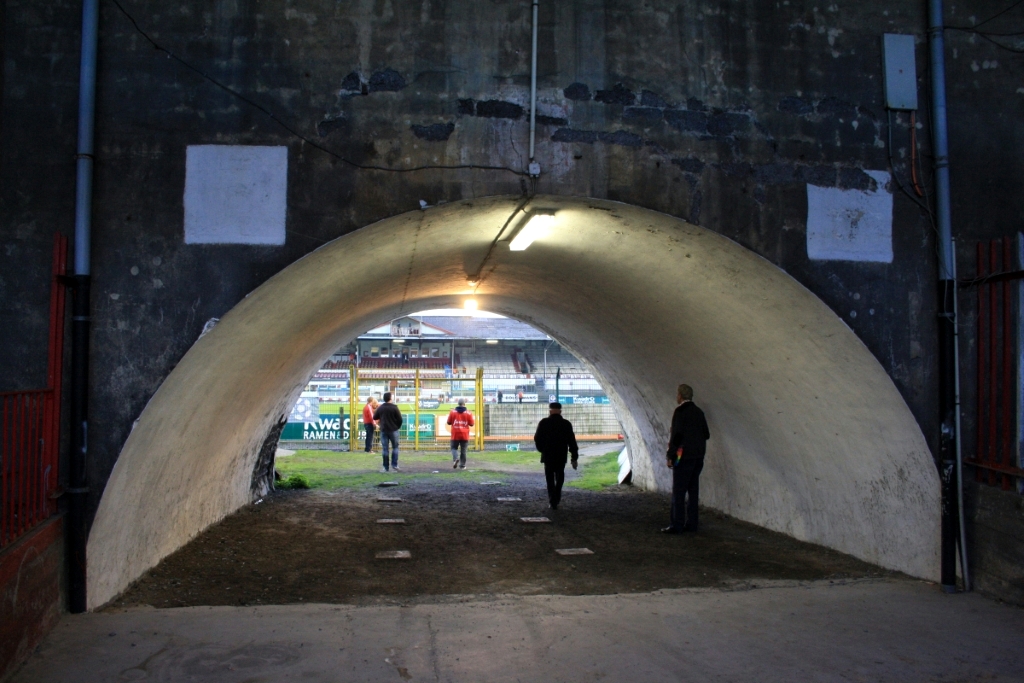
Bosuilstadion
The central tunnel dating from 1923.
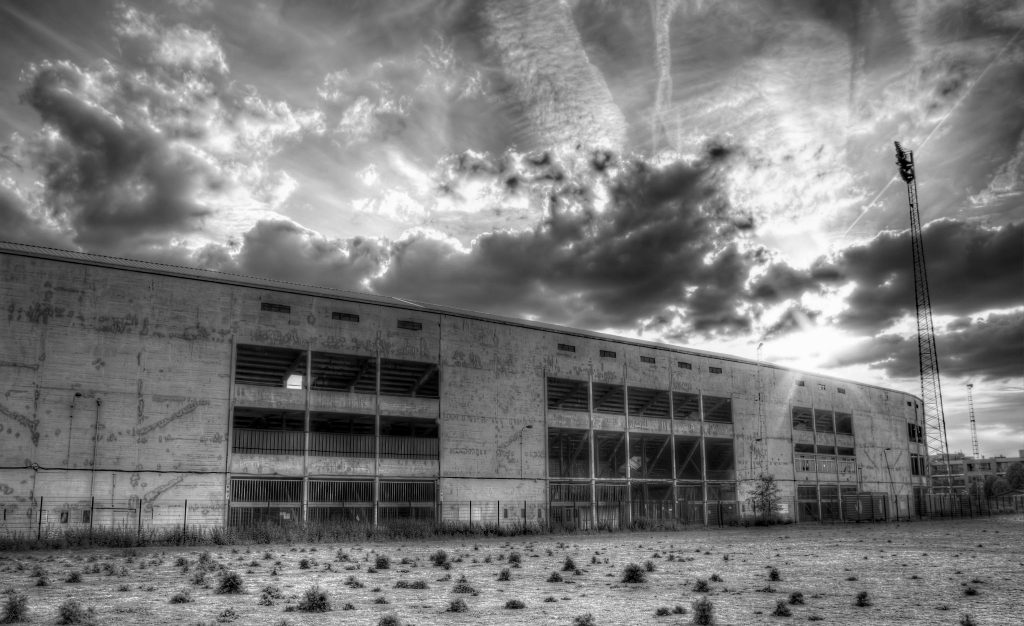
Bosuilstadion
Rear facade of the stand 2.
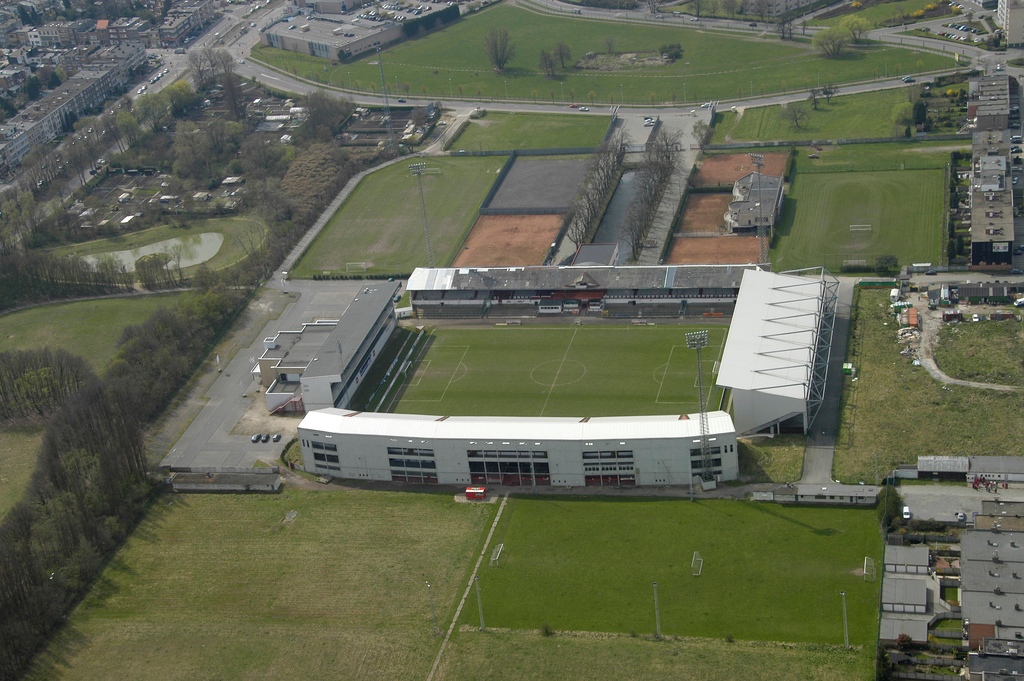
Bosuilstadion
The Bosuil just before the refurbishment of stand 1. The clubhouse of the tennis club is still abandoned before being refurbished, then demolished at the same time as stand 1.
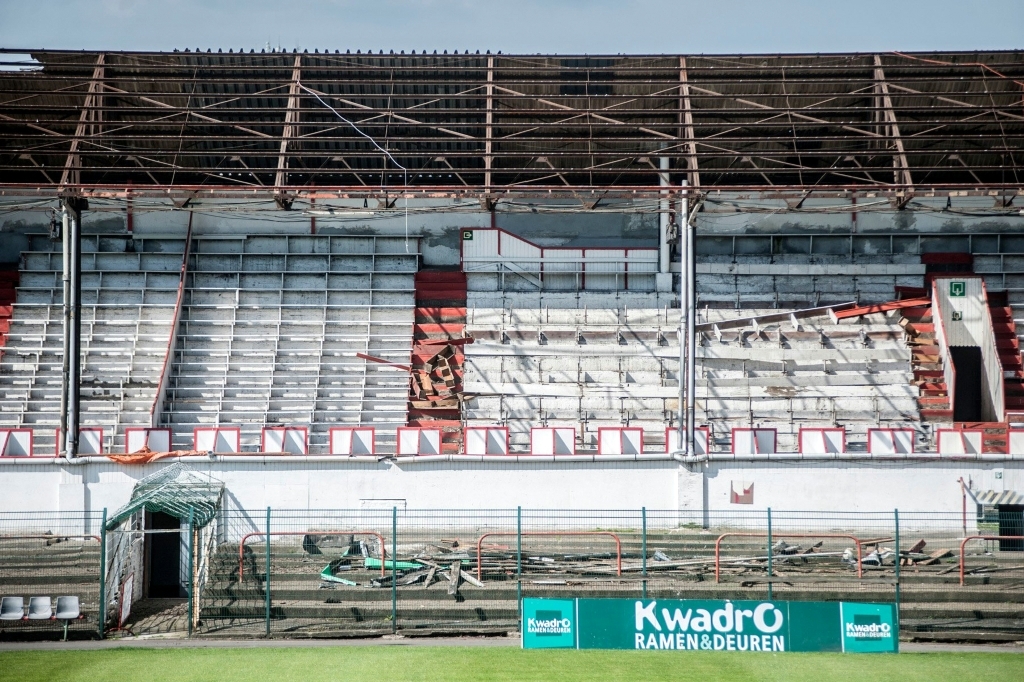
Bosuilstadion
Beginning of the renovation of the stand 1 in 2015. The roof has been renovated while old concrete stands worn by time has been demolished.
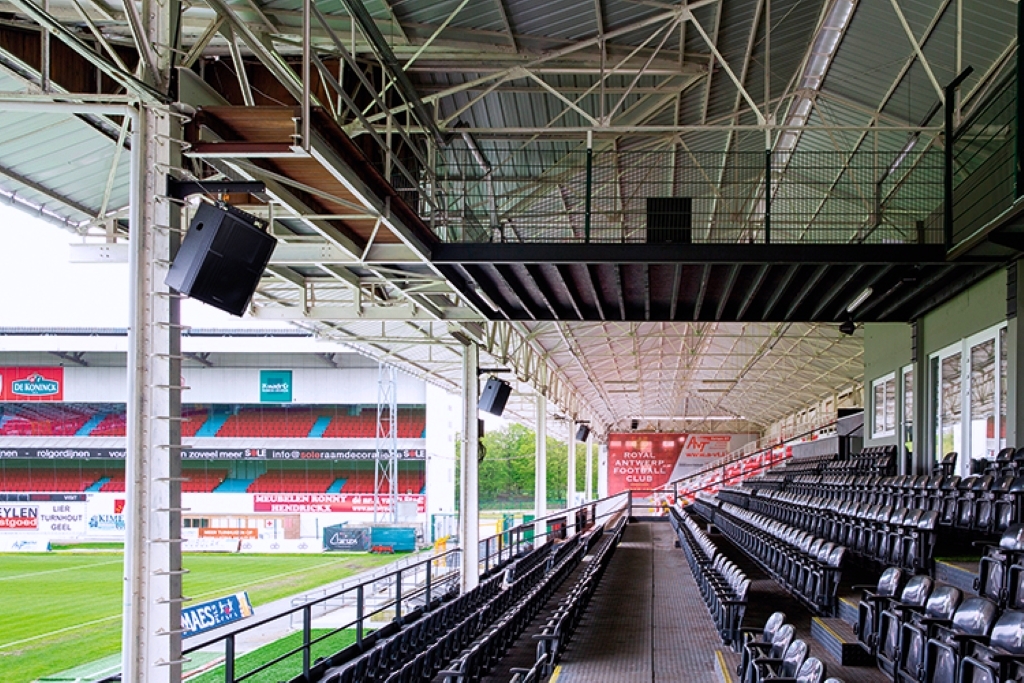
Bosuilstadion
The main stand freshly renovated.
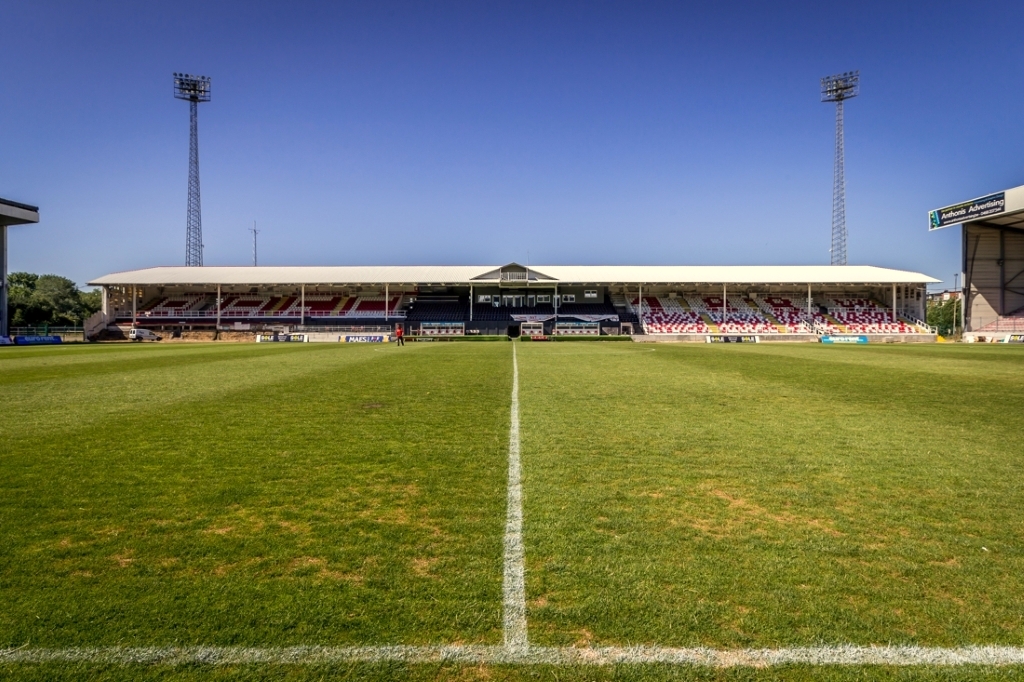
Bosuilstadion
It was believed at the time that this venerable construction would remain standing for a long time...
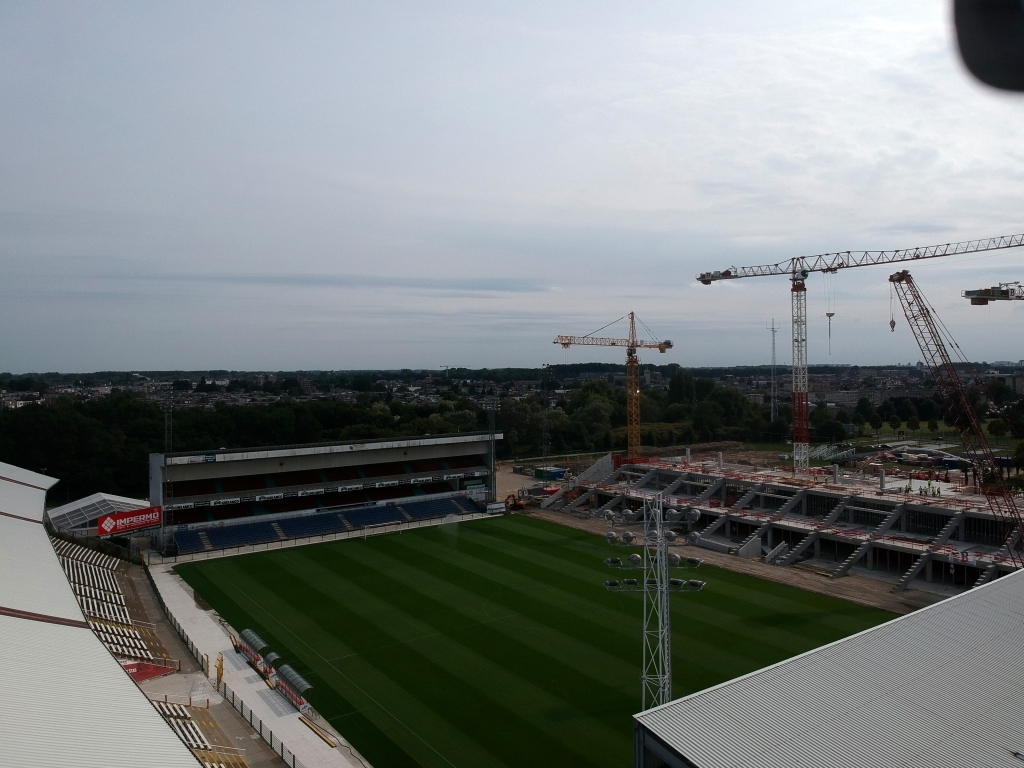
Bosuilstadion
In 2016, total demolition of the ancient stand 1.
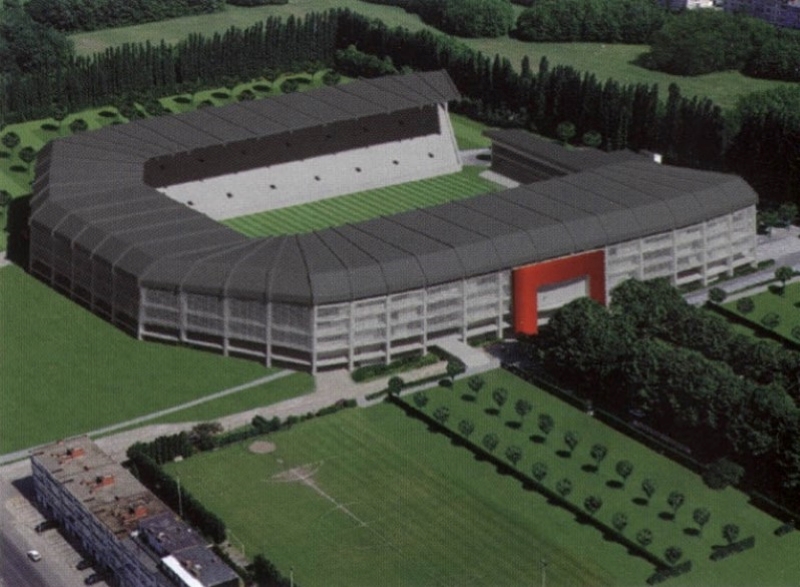
Bosuilstadion
The aborted reconstruction project for Euro 2000. The Atrium Complex would have been preserved.
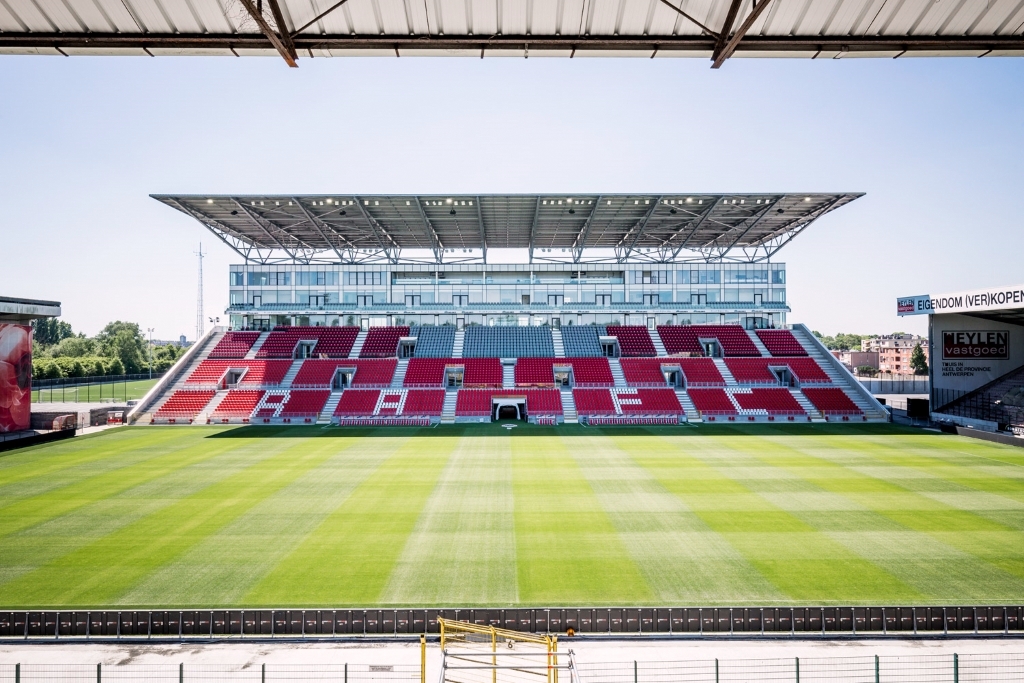
Bosuilstadion
The new ultramodern stand.
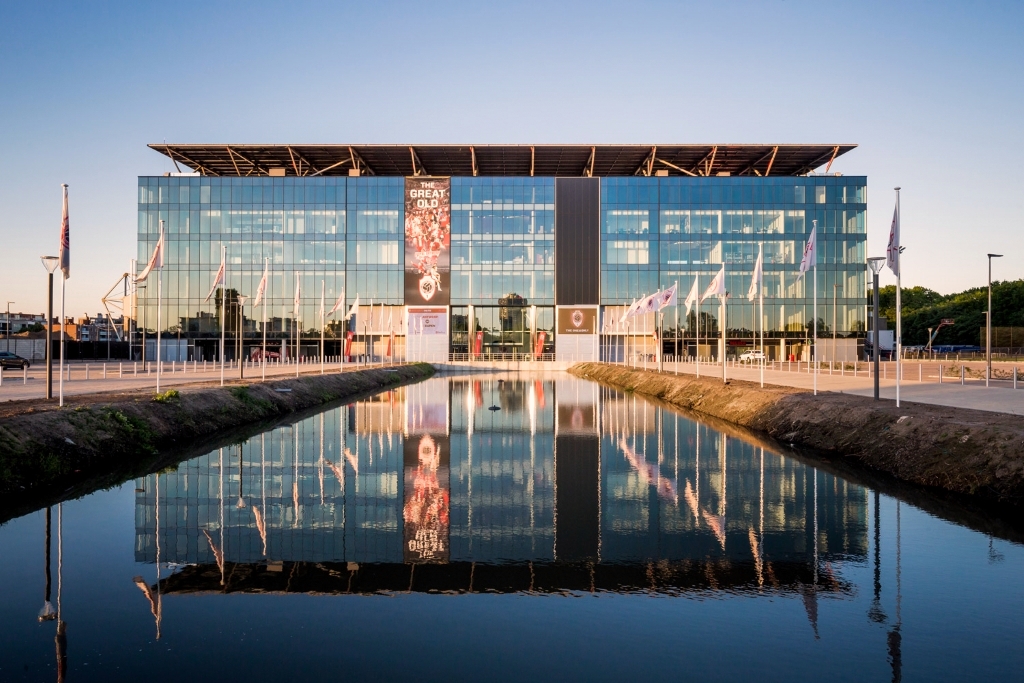
Bosuilstadion
The Bosuil is now a modern stadium.
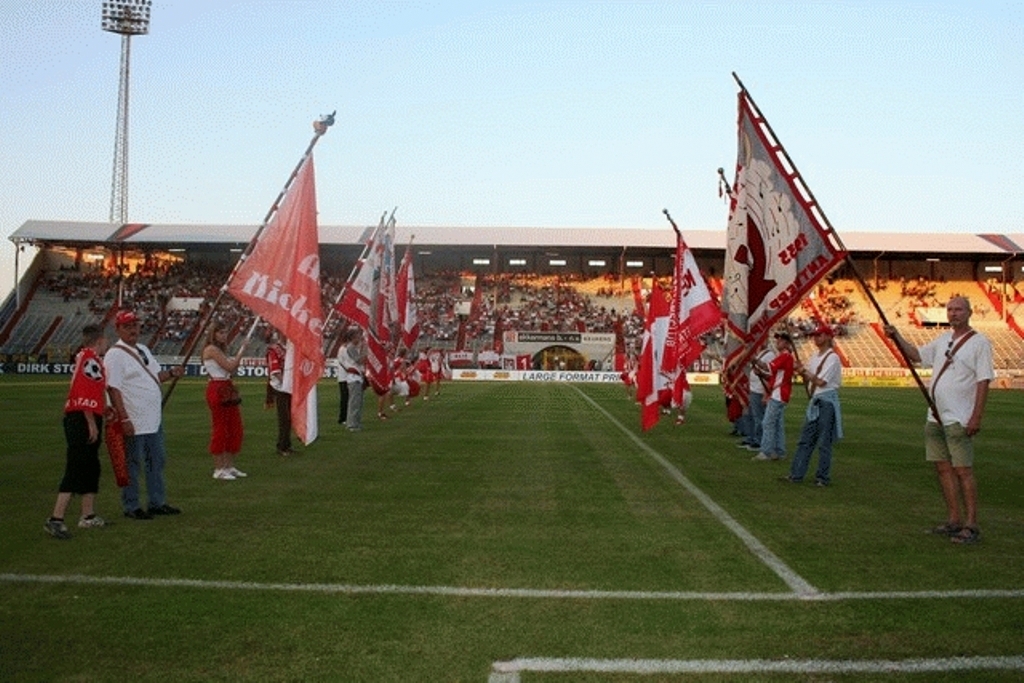
Bosuilstadion
Fortunately, the RAFC retains its traditions, in default of being able to keep its historic home.
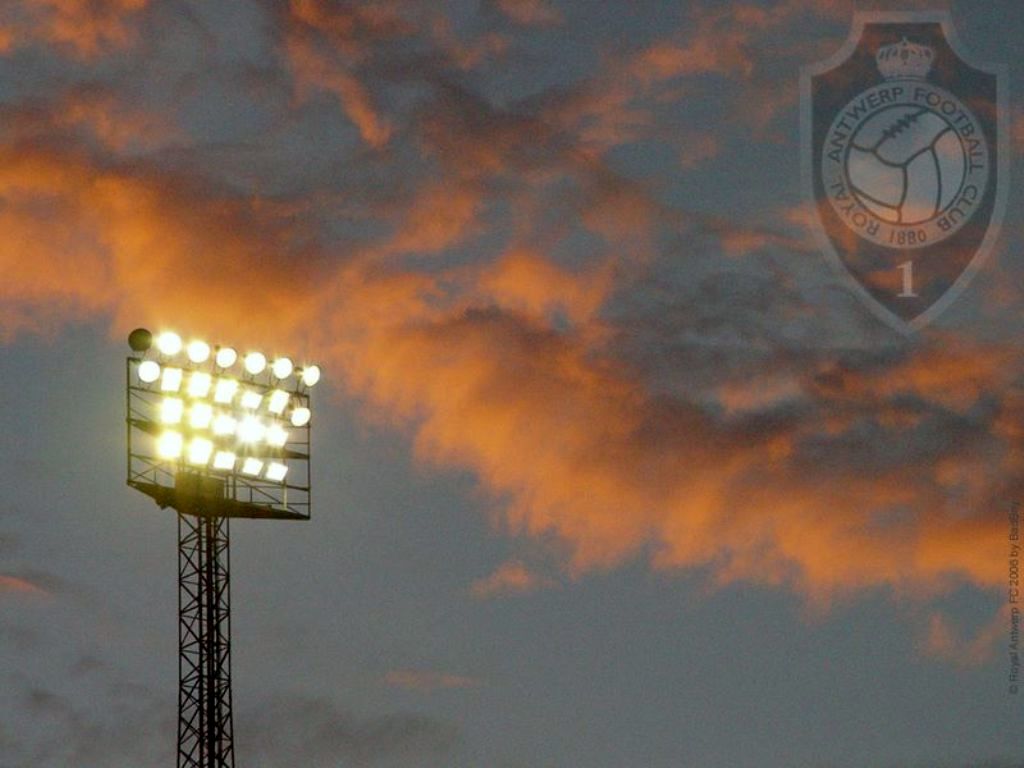
Bosuilstadion
Place to modernism...
Notes
-
This article comes from my former website foothisto.be and was published on April 5, 2015.
It has been somewhat modified and updated lately (November 2019). - Pictures belong to their respective authors.
Related pages
- Page dedicated to the visit of the city of Antwerp.
- Page dedicated to the Kiel, home of the main rival of Beerschot AC.
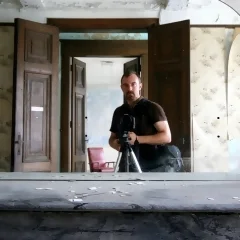
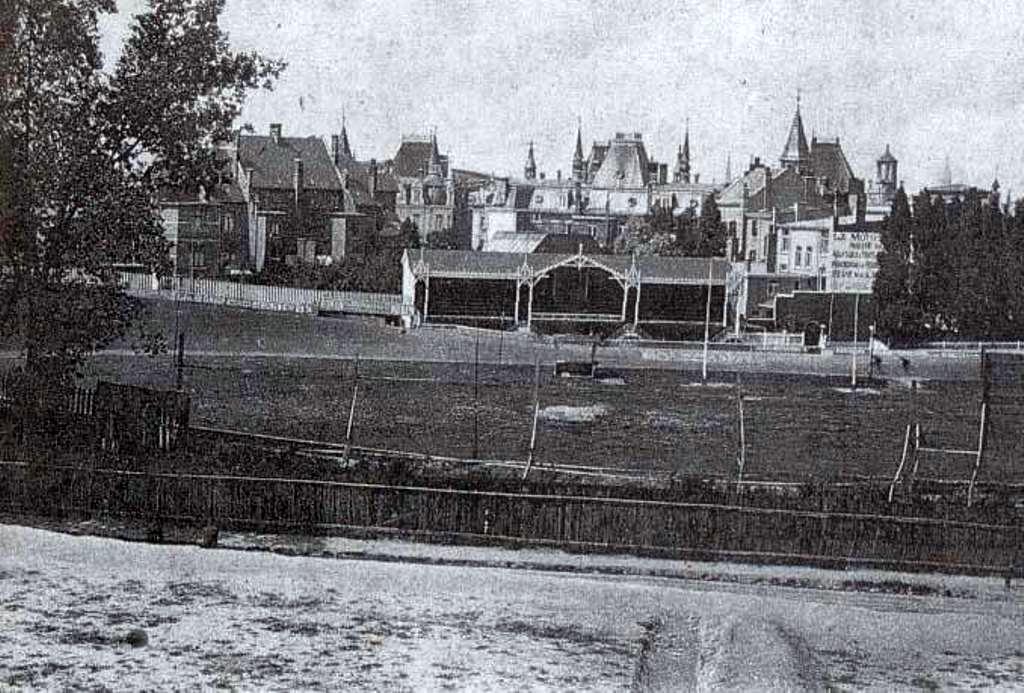
Soyez le premier & devenez quelqu’un de bien • Be the first & become a good person